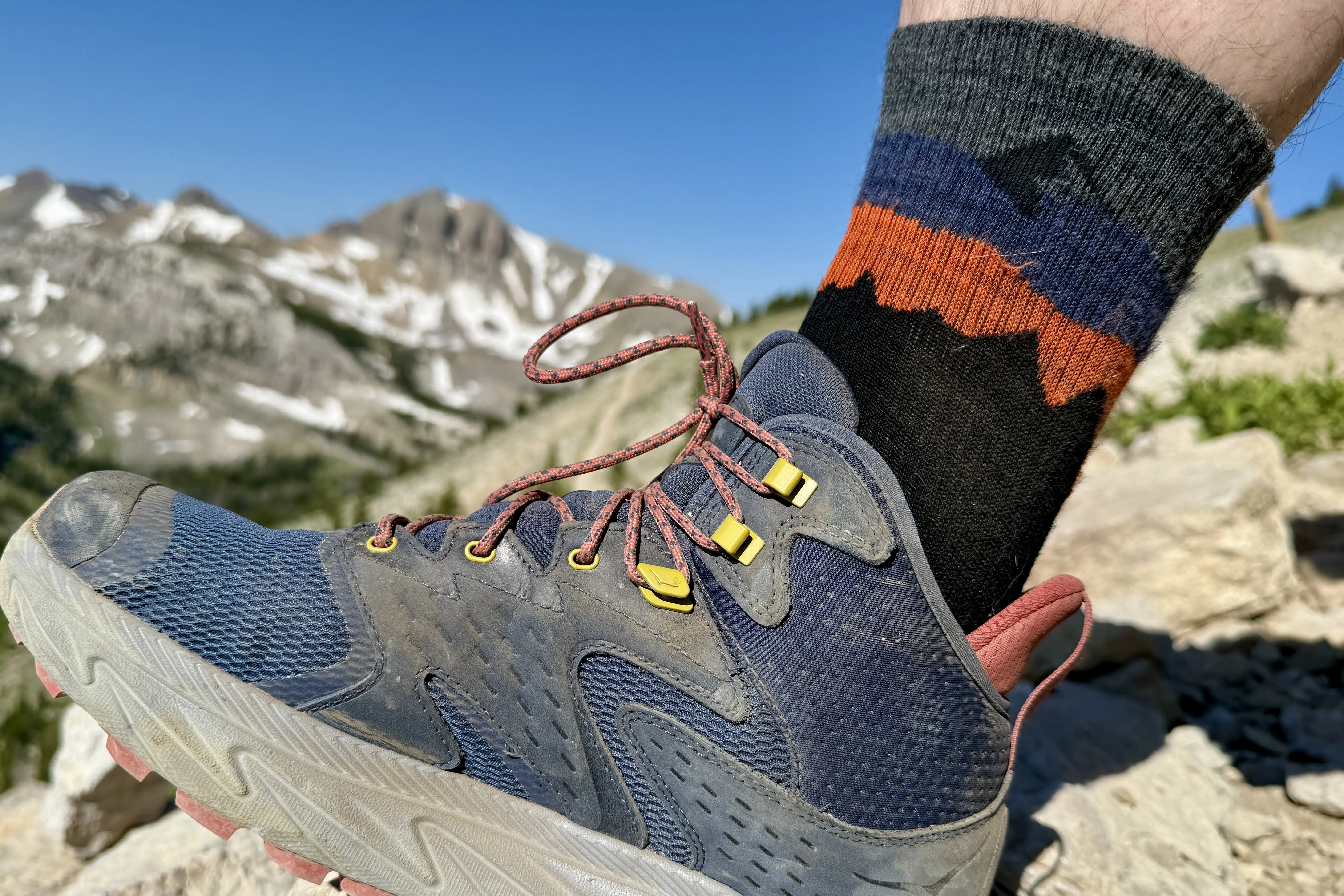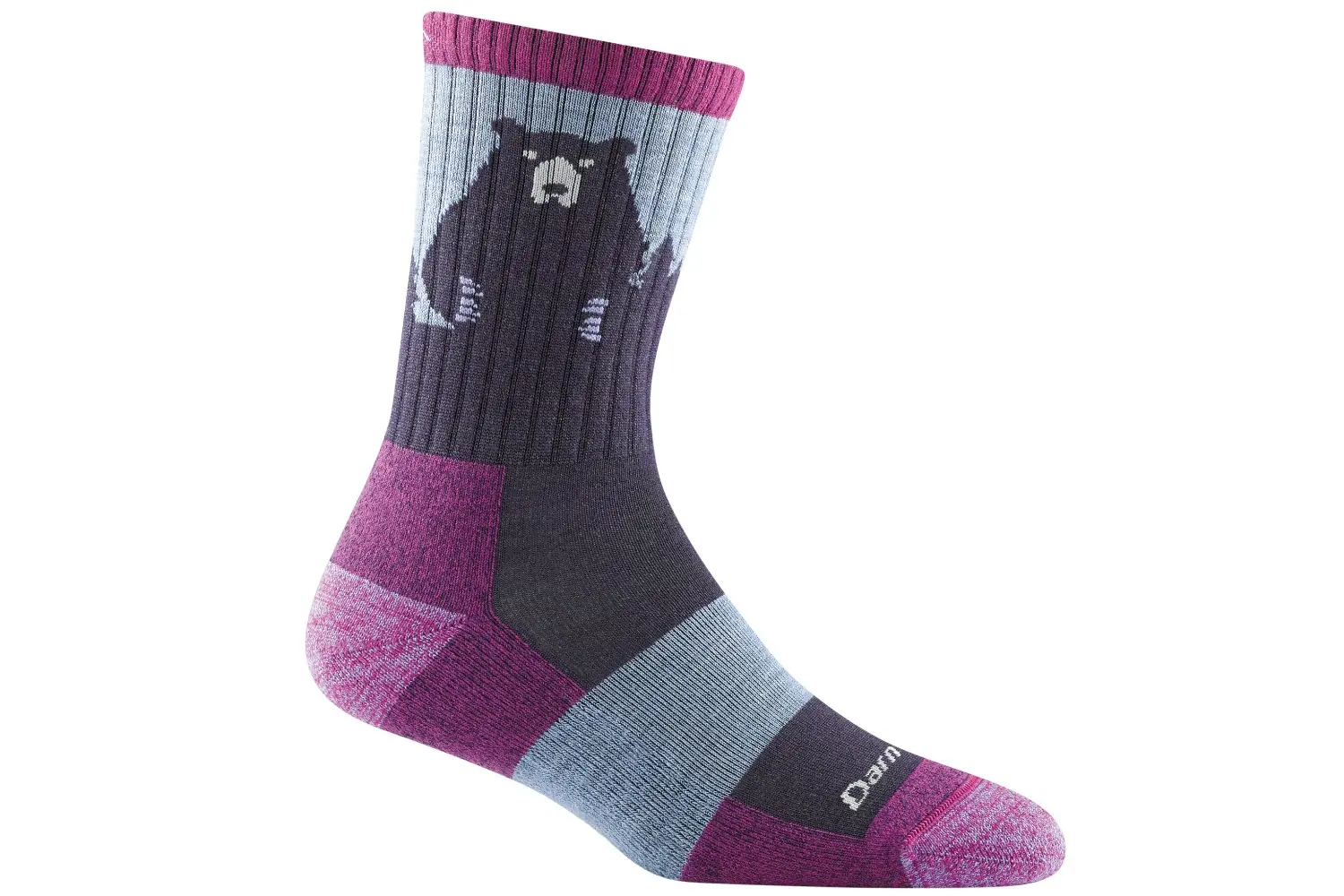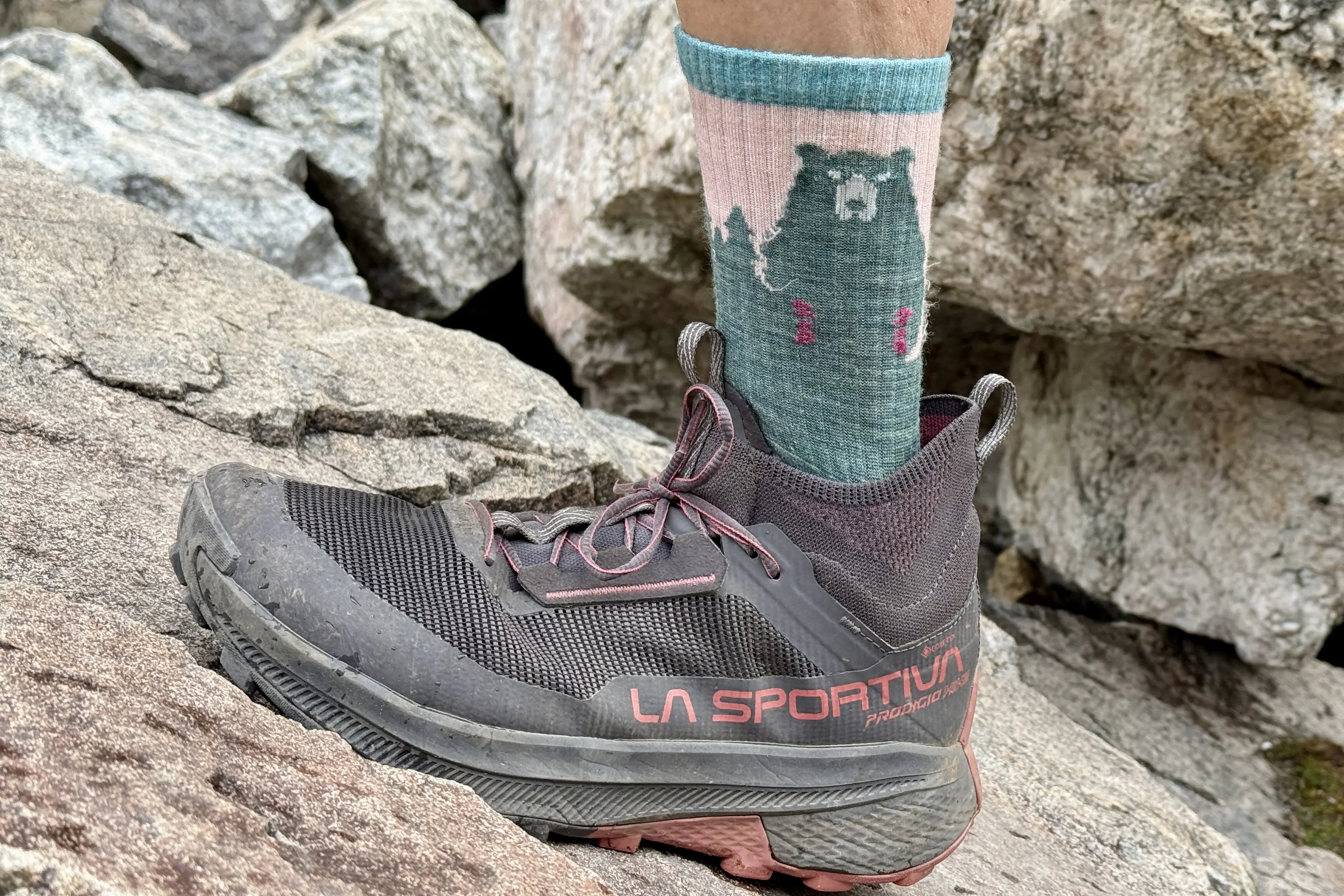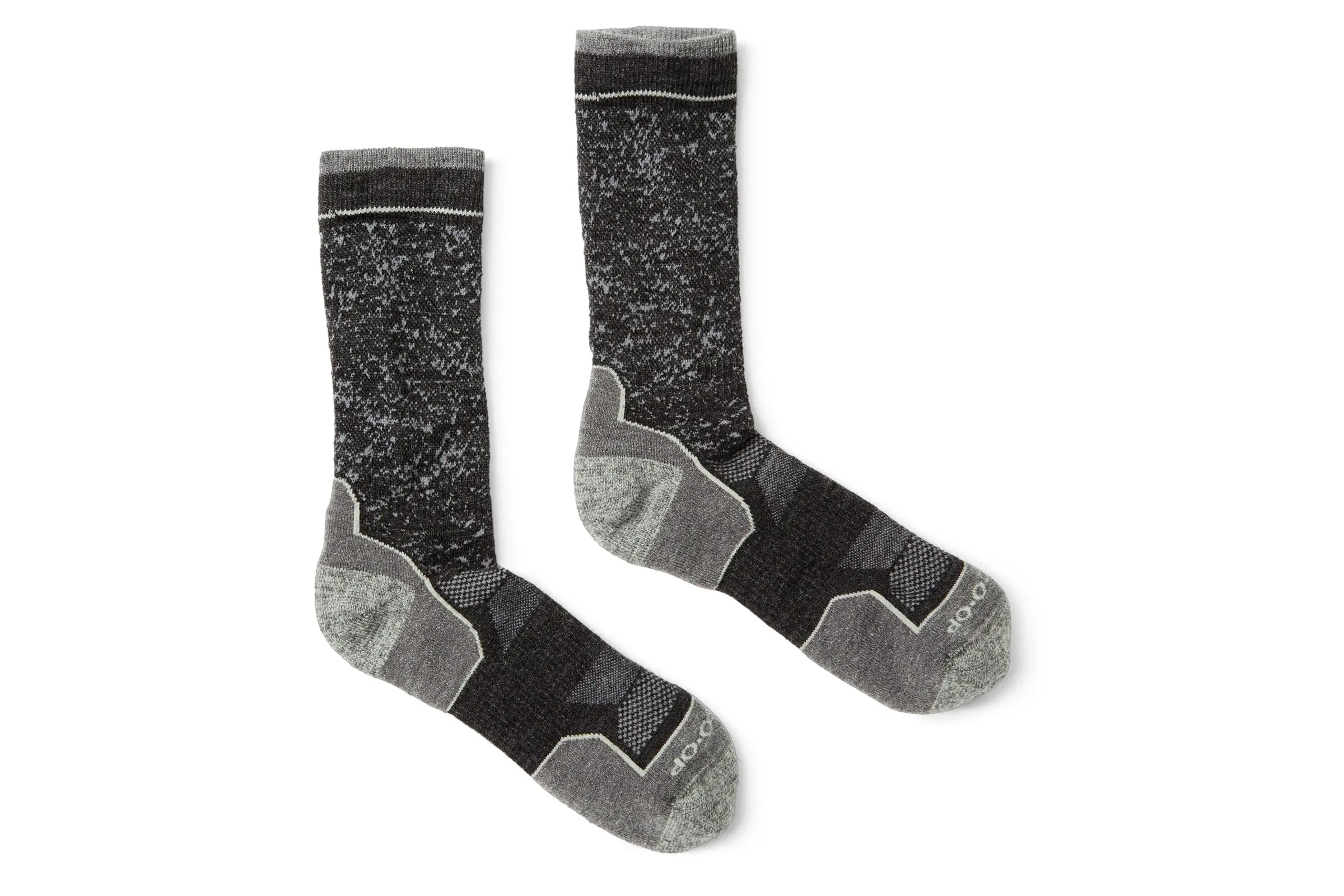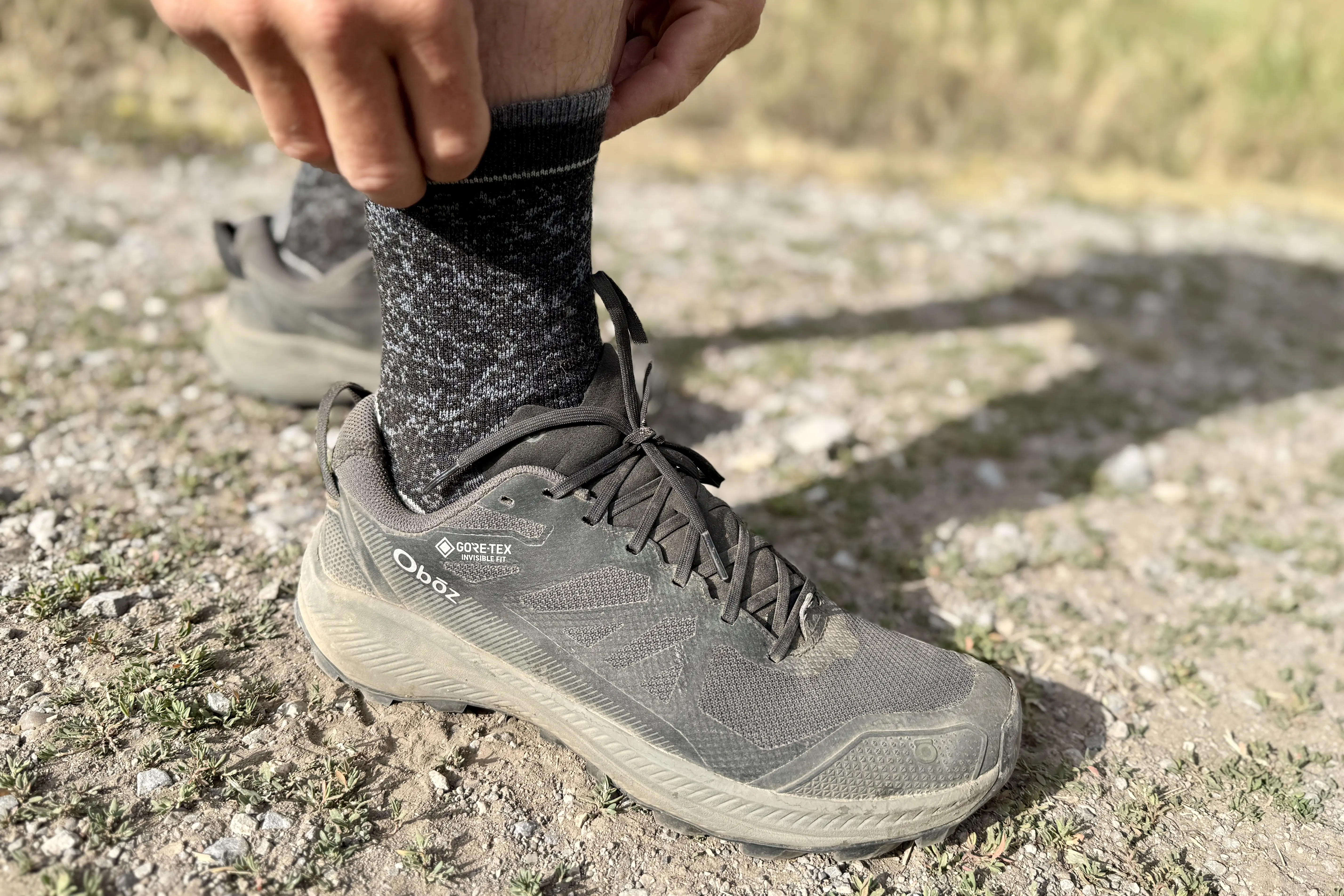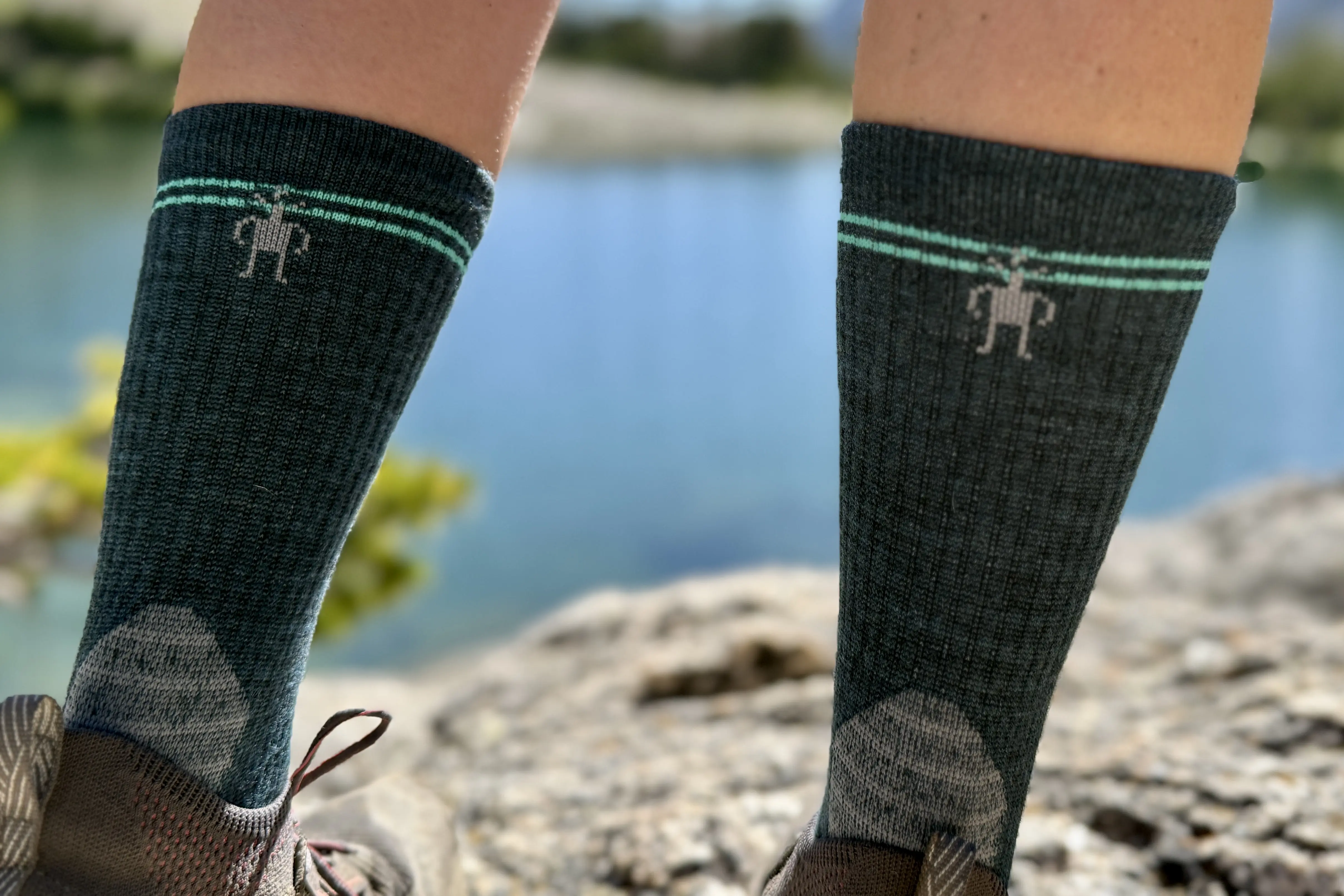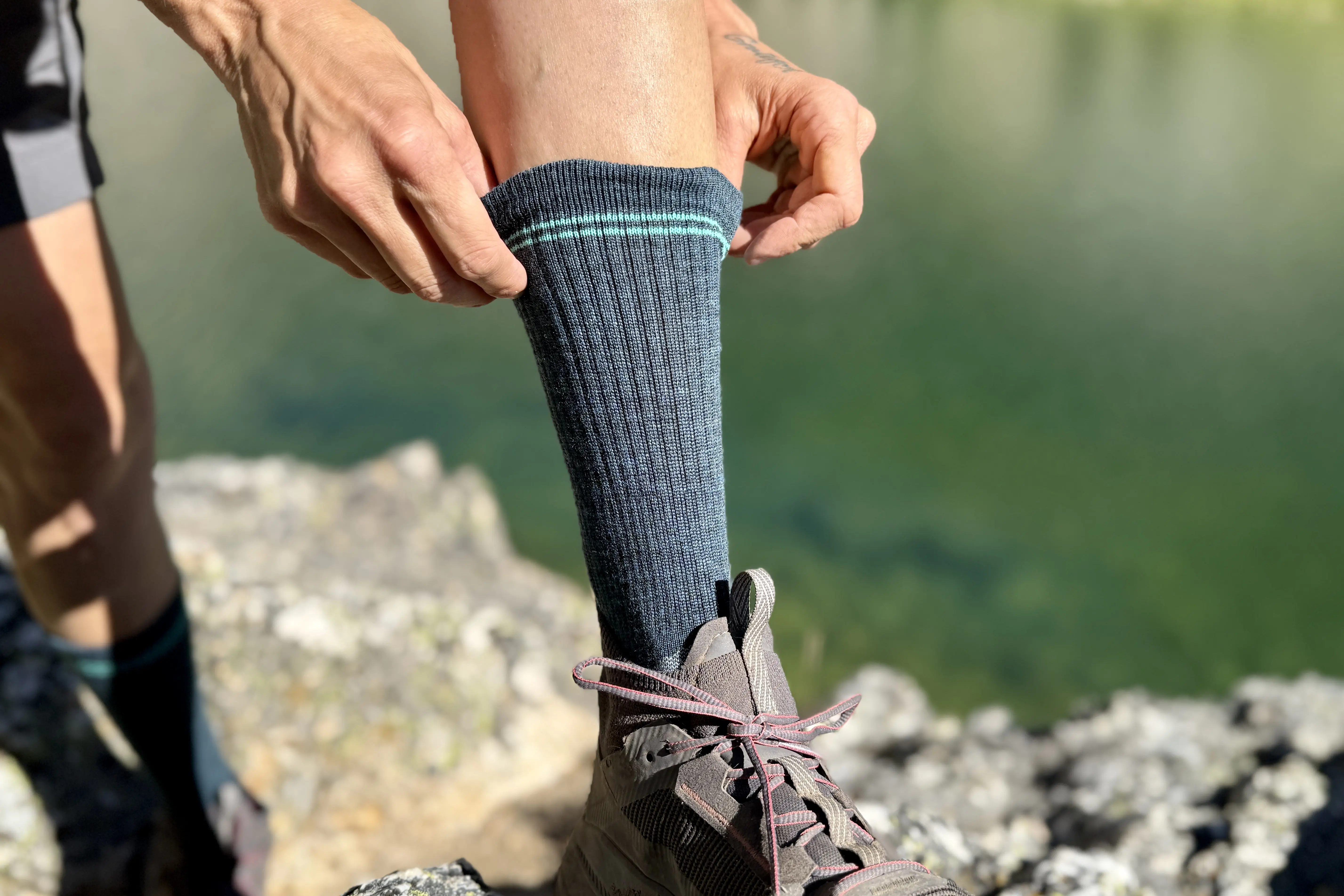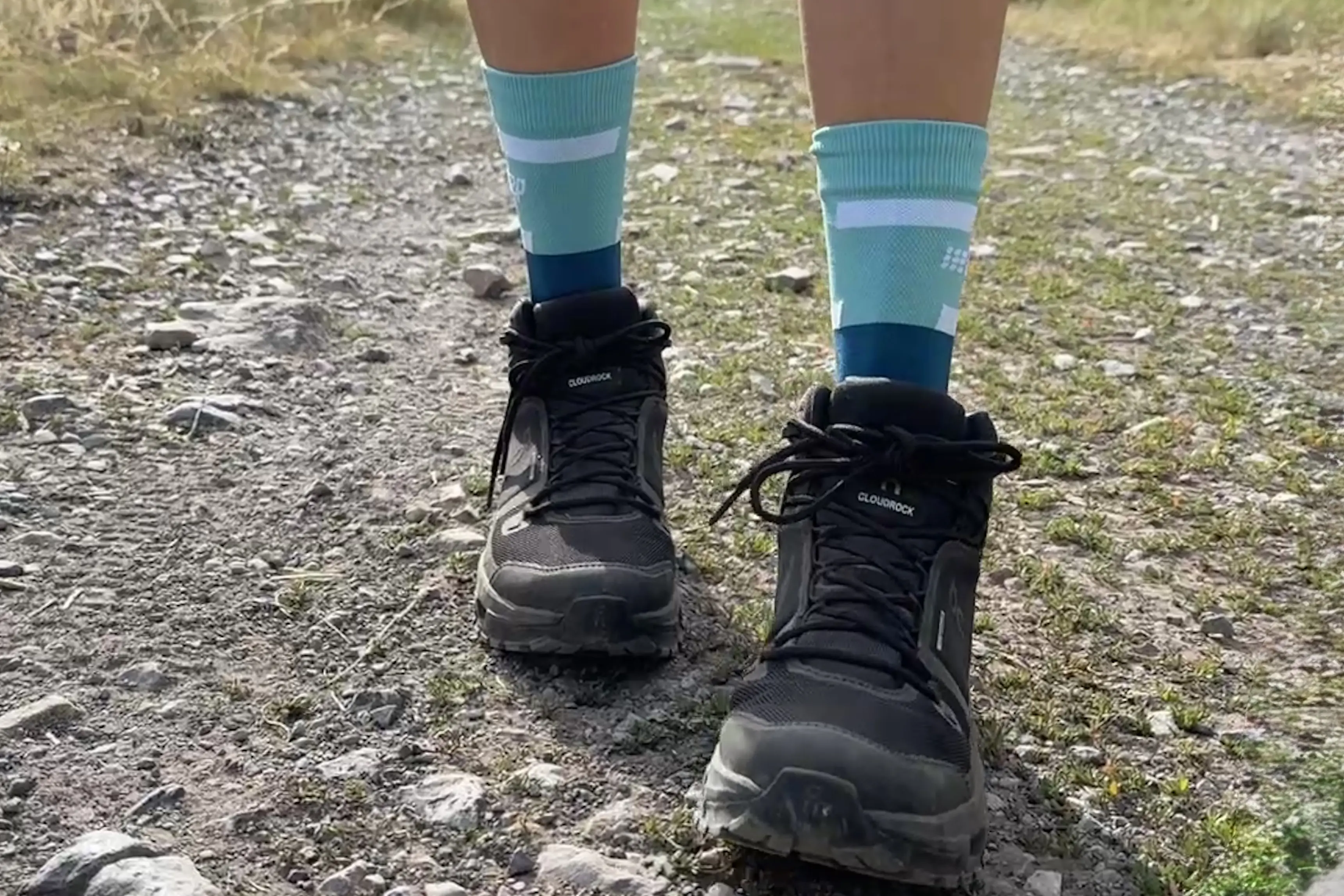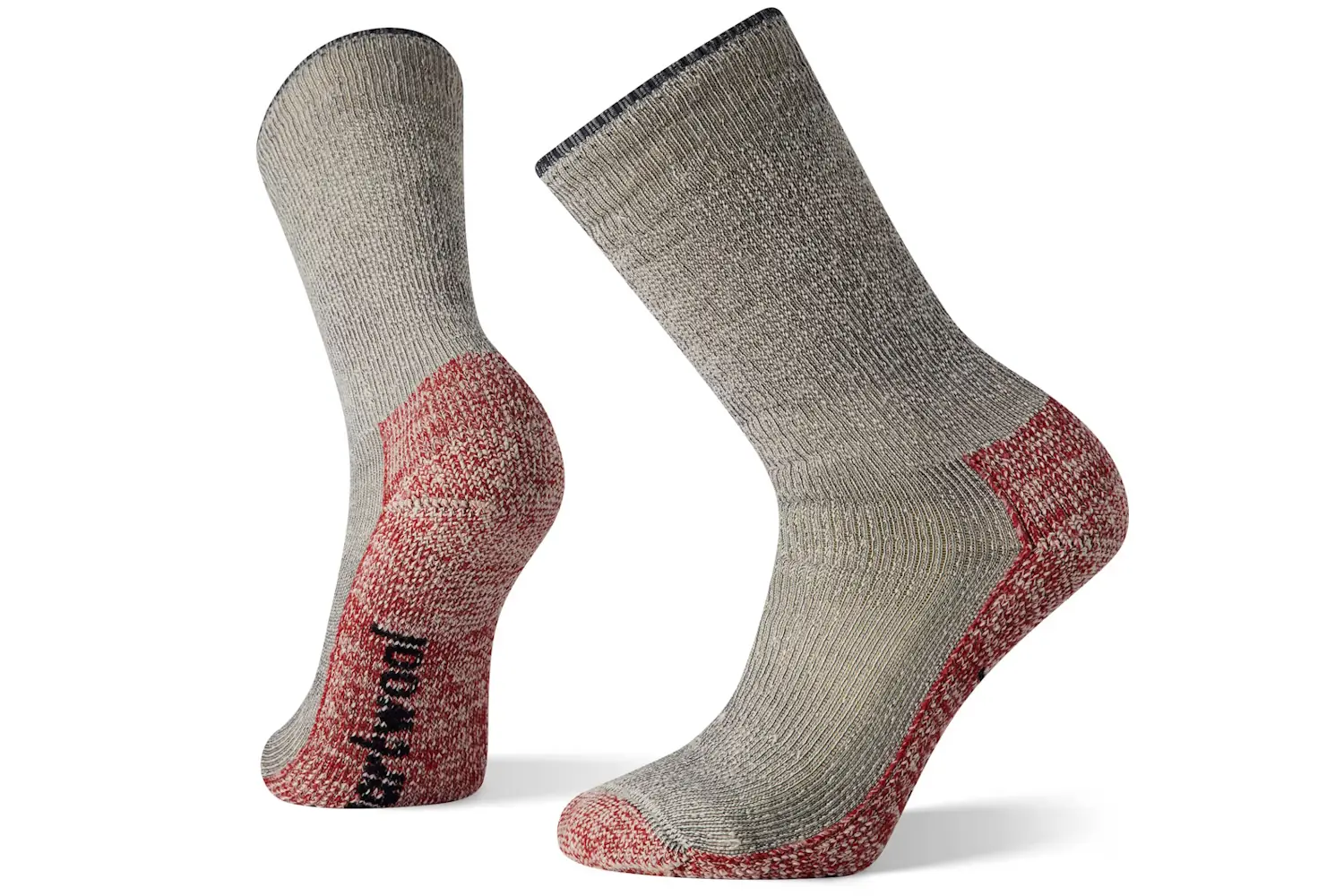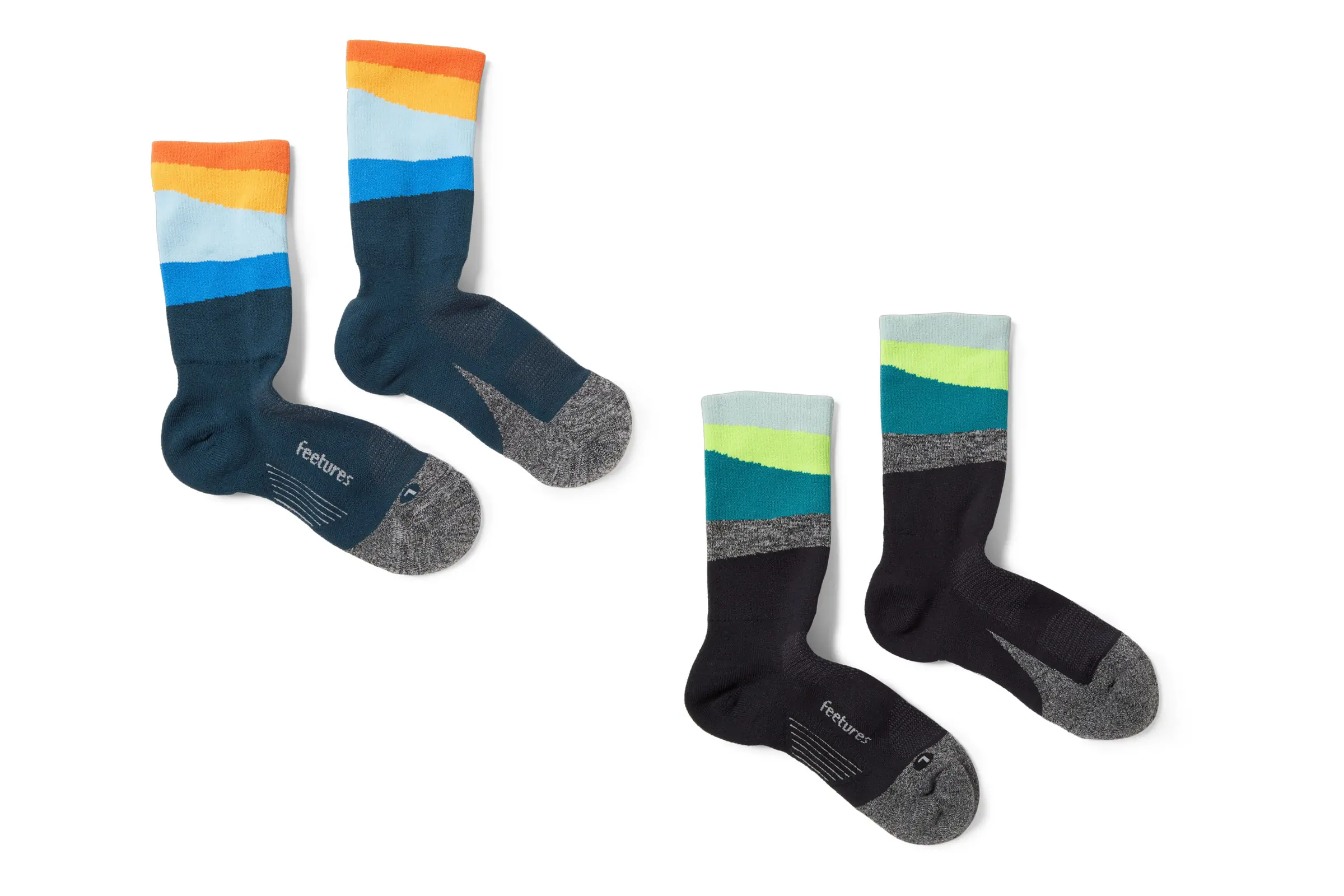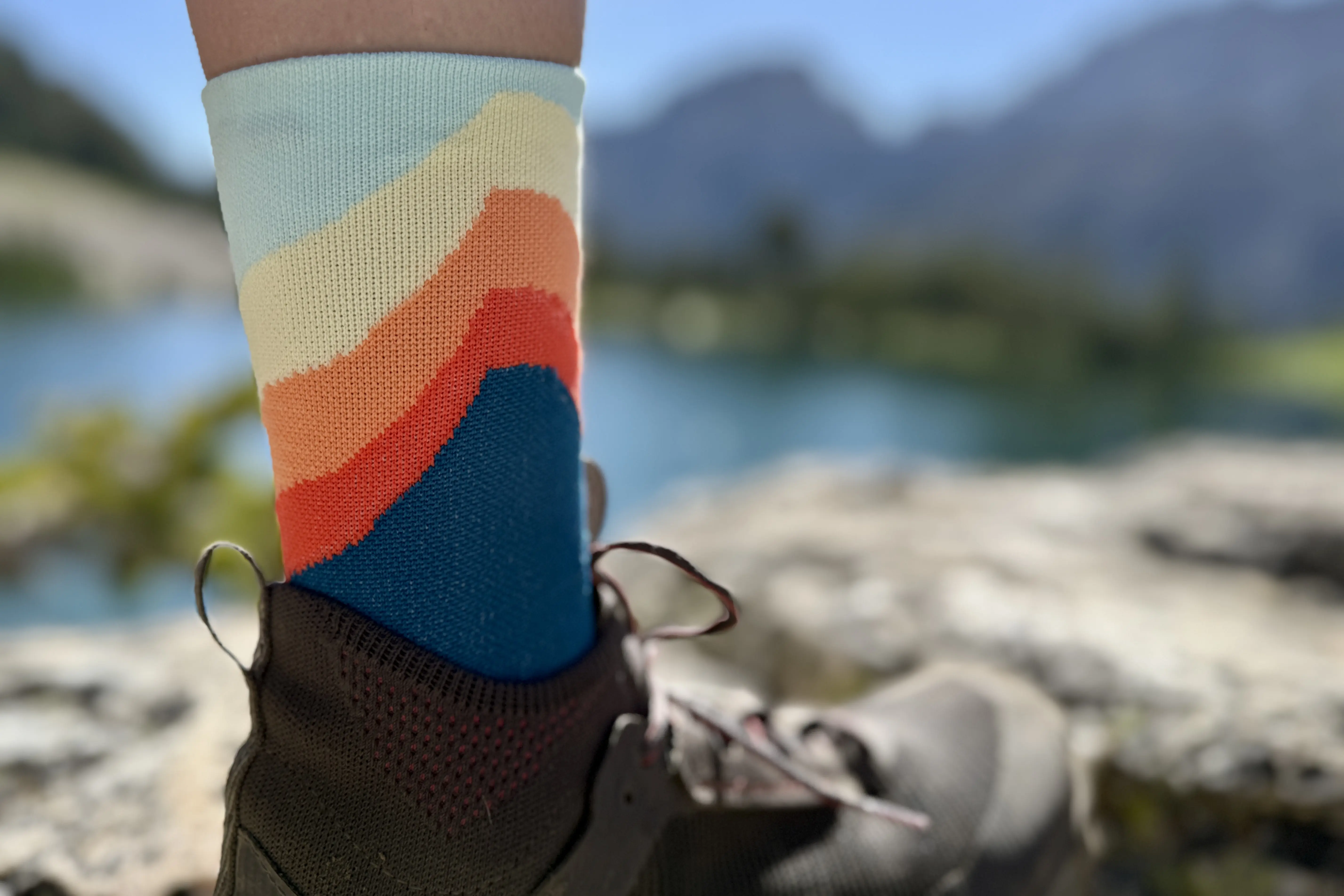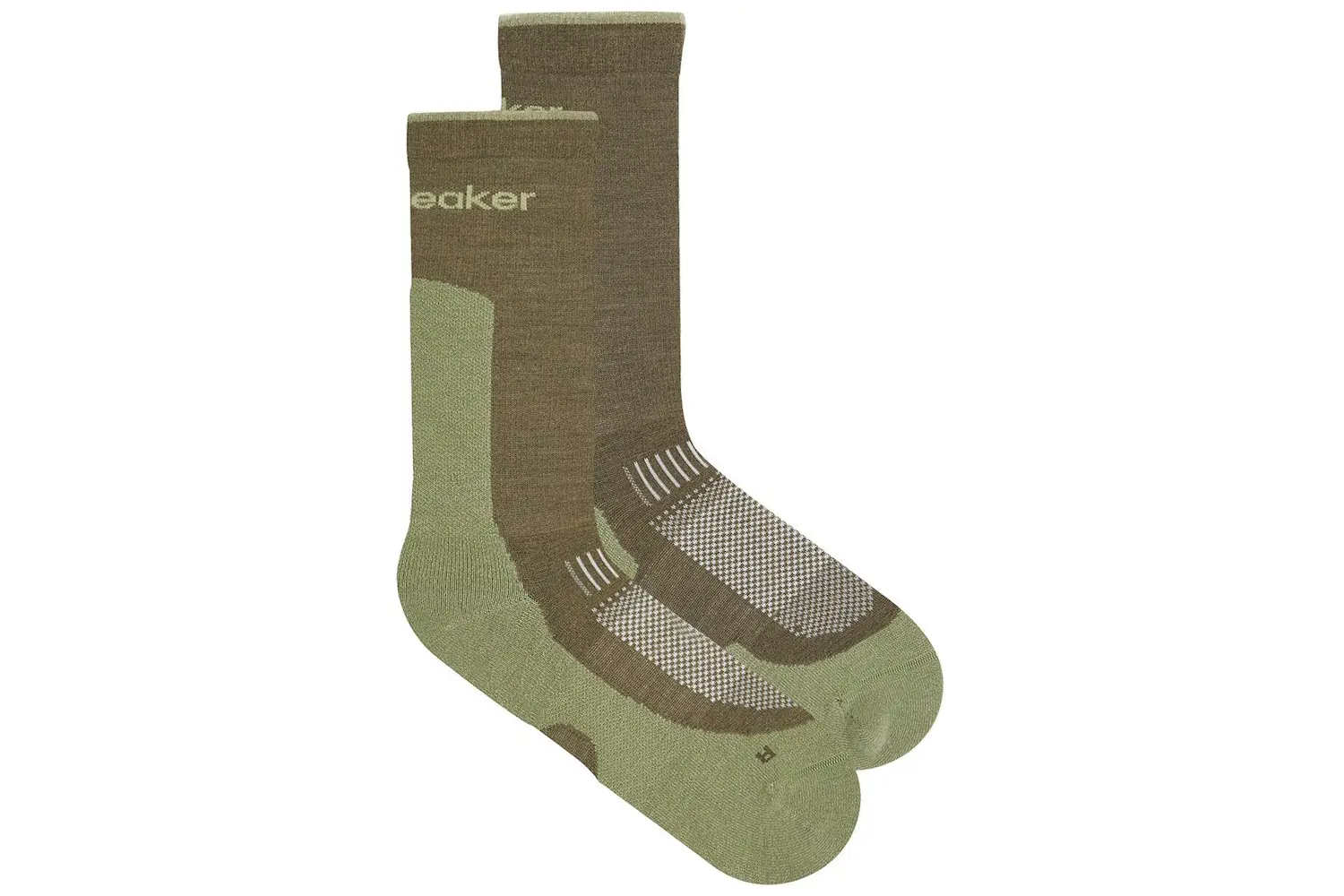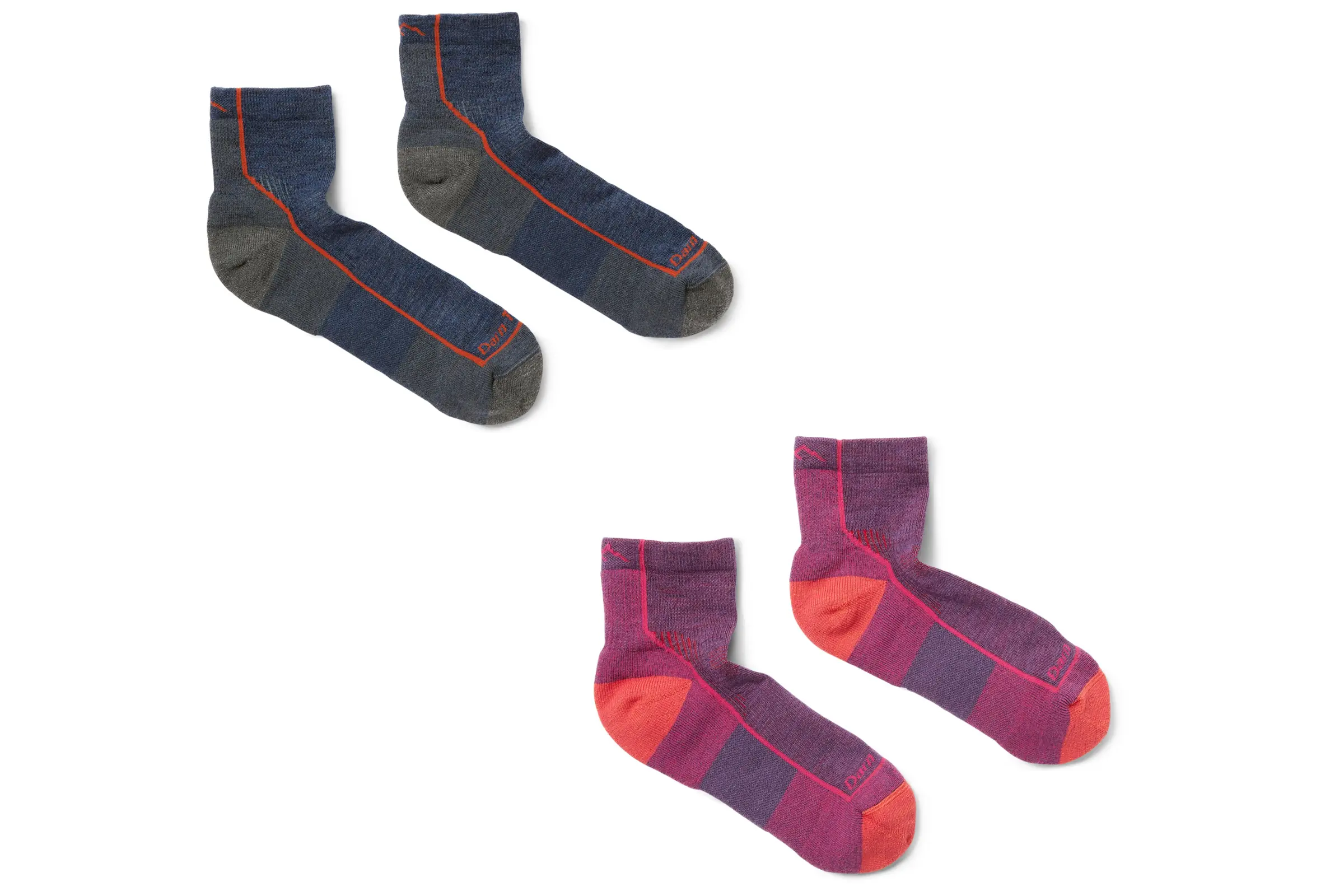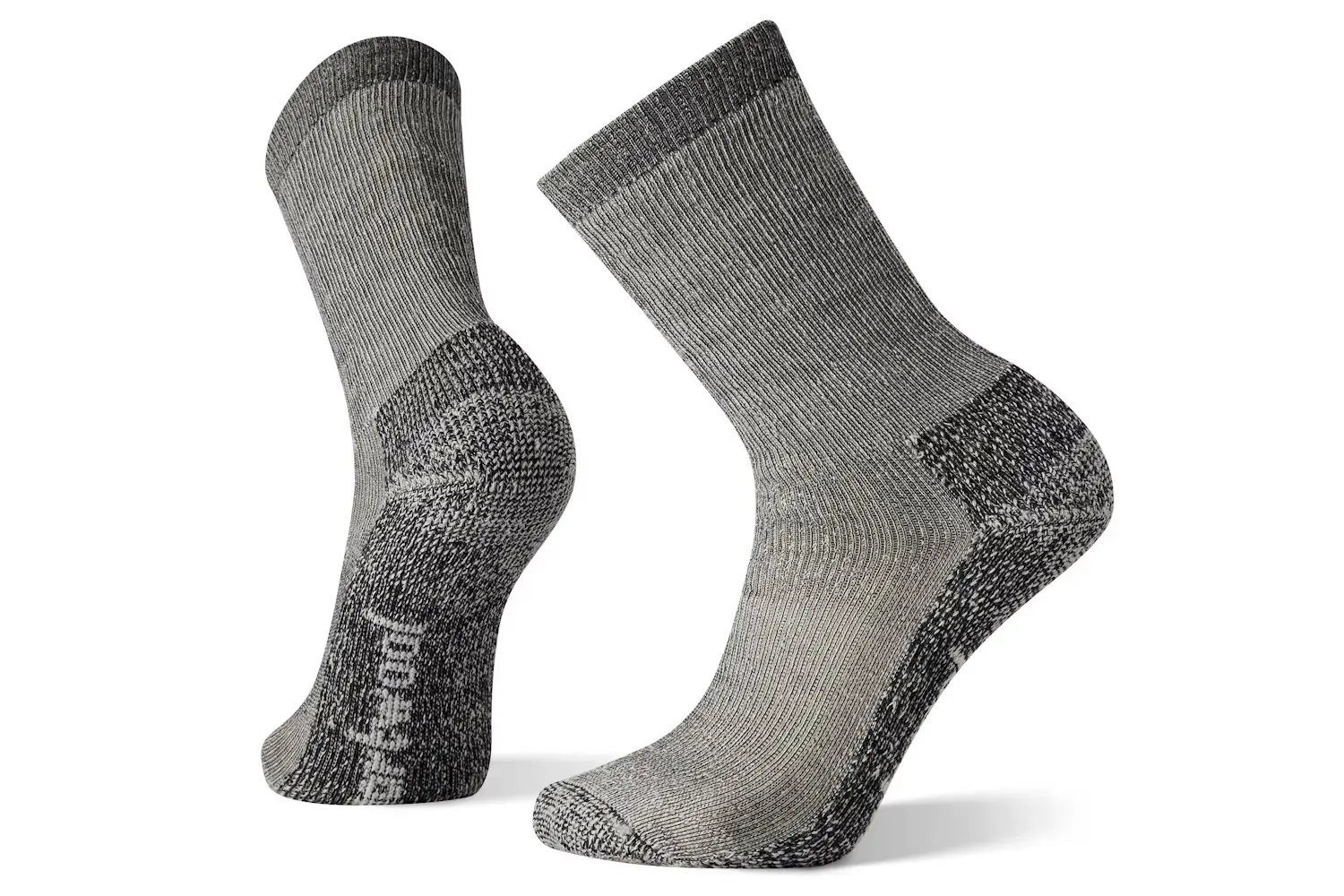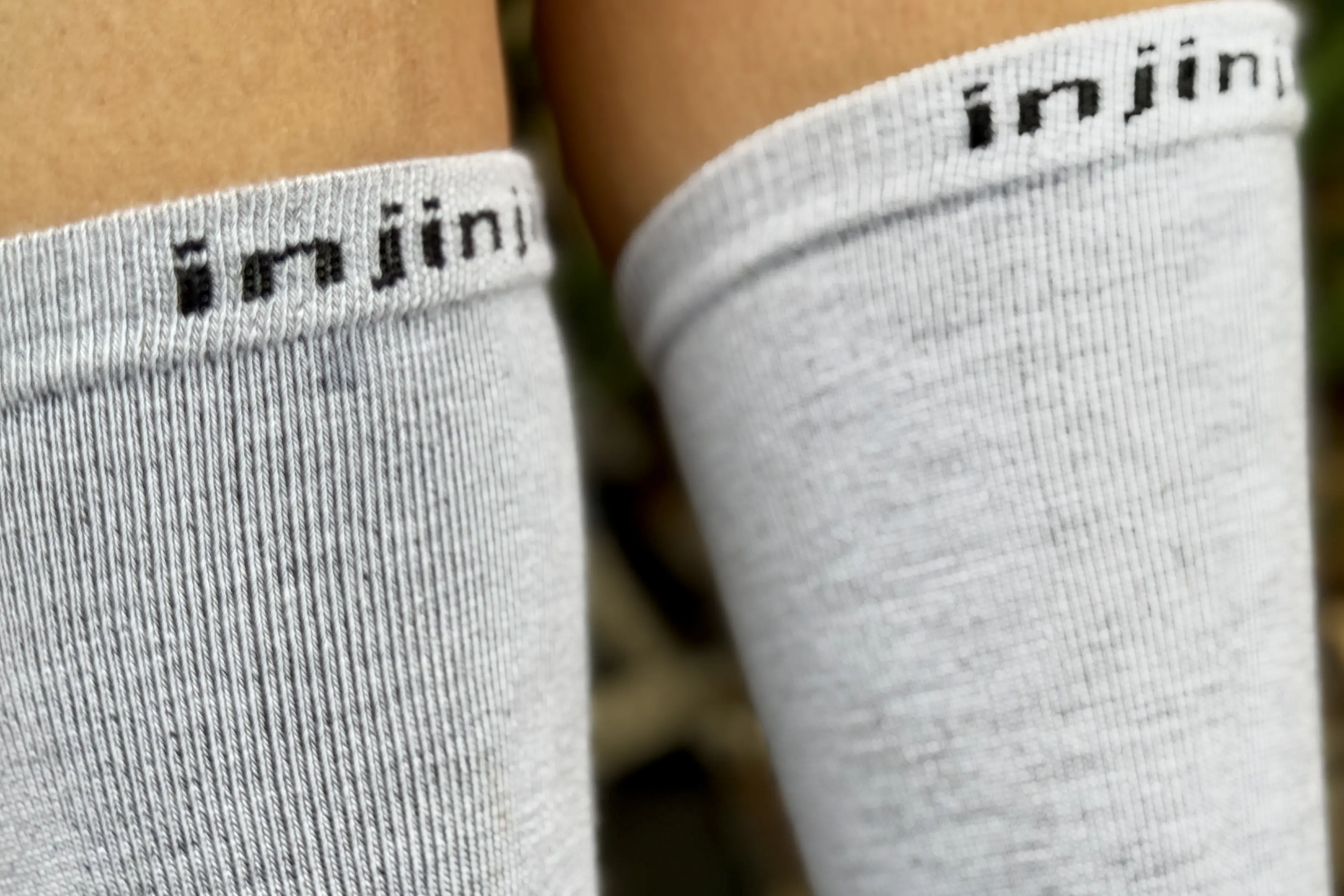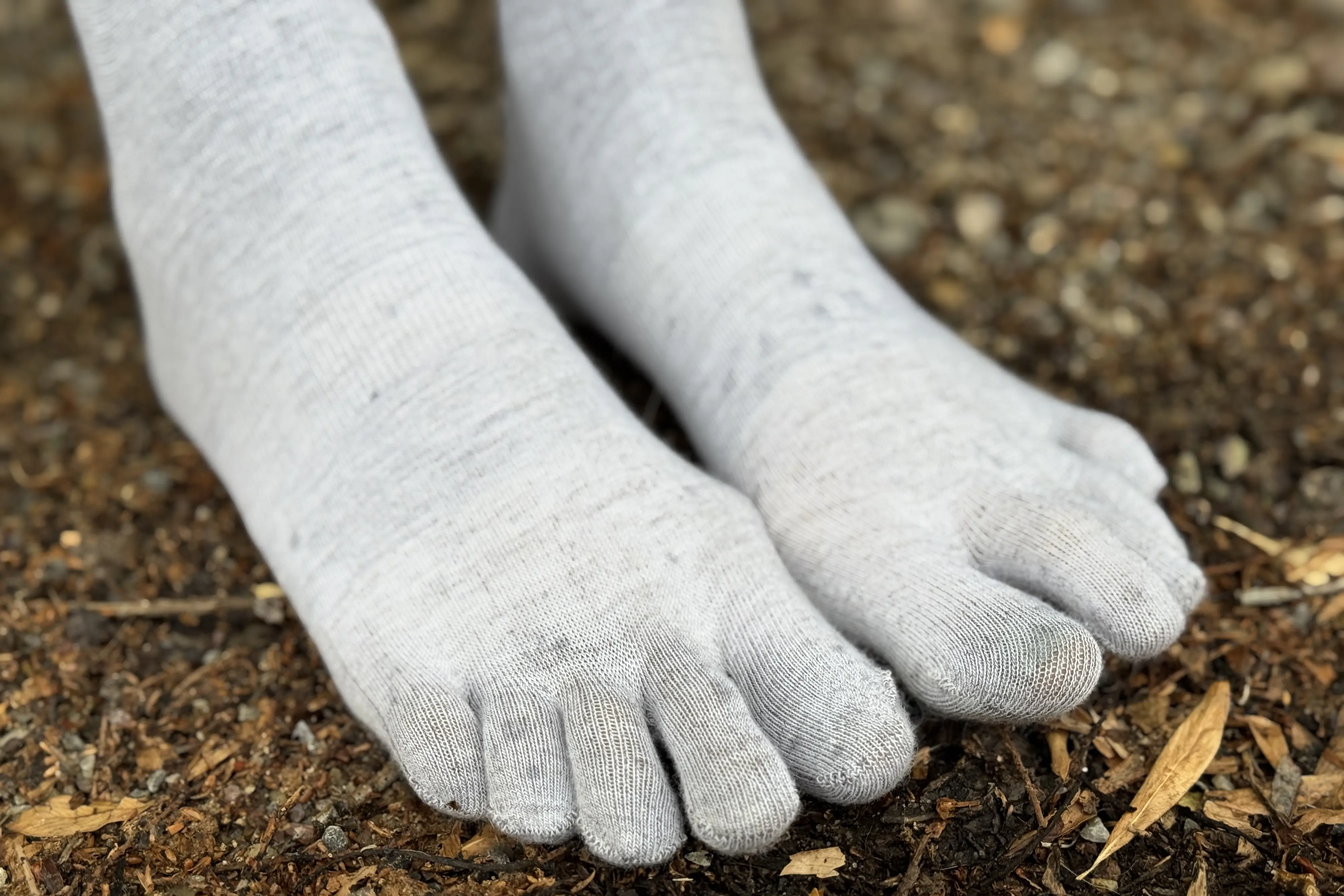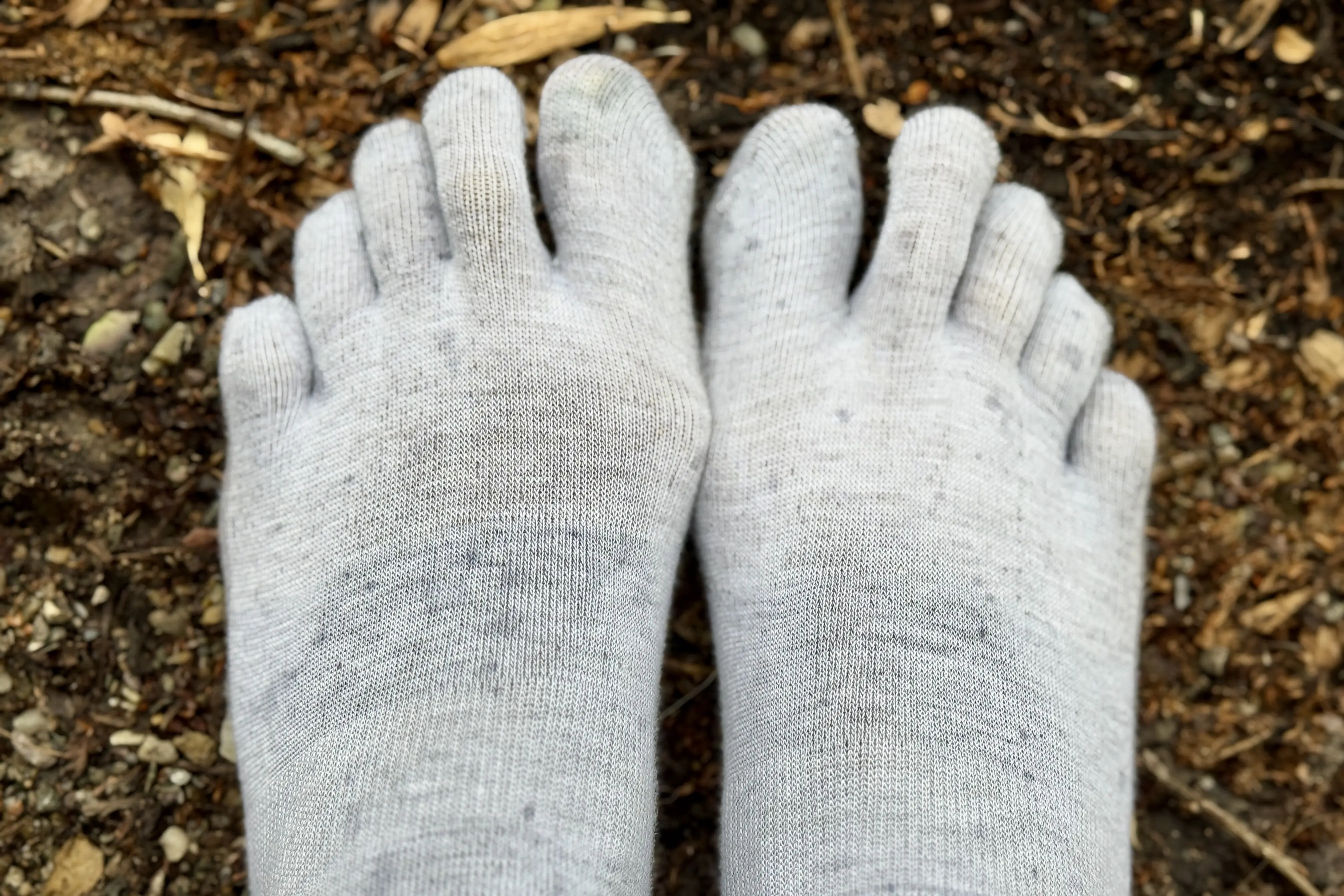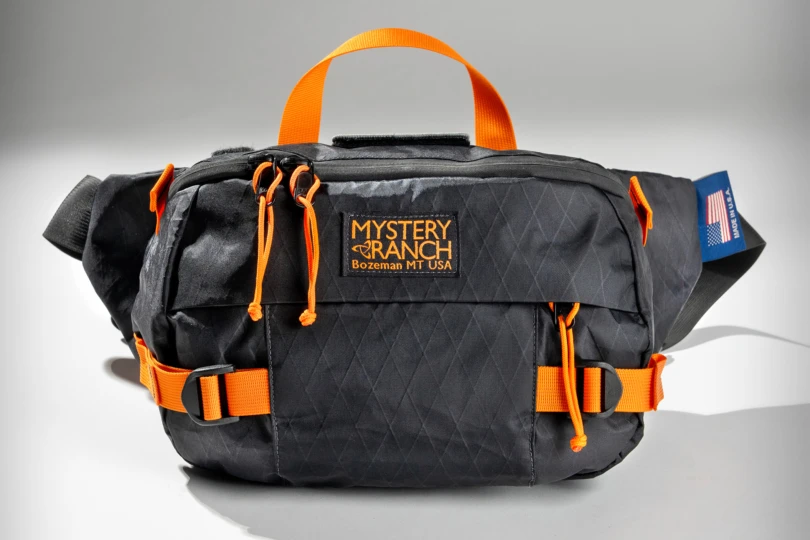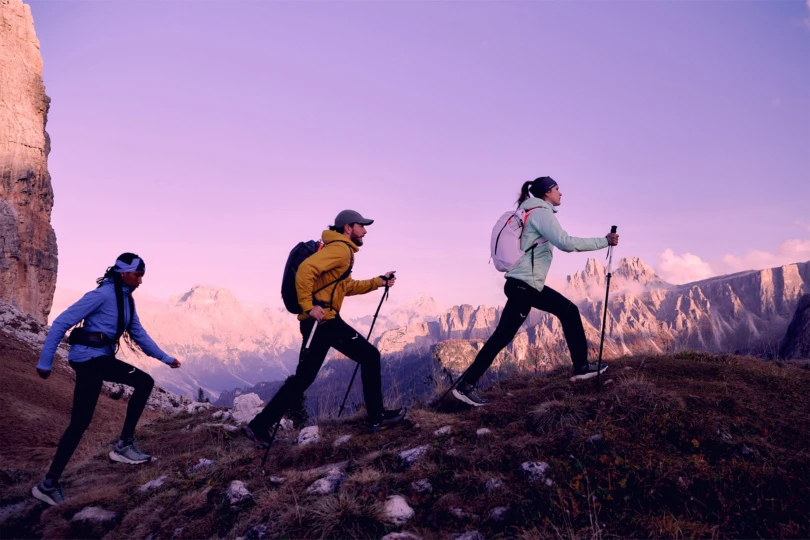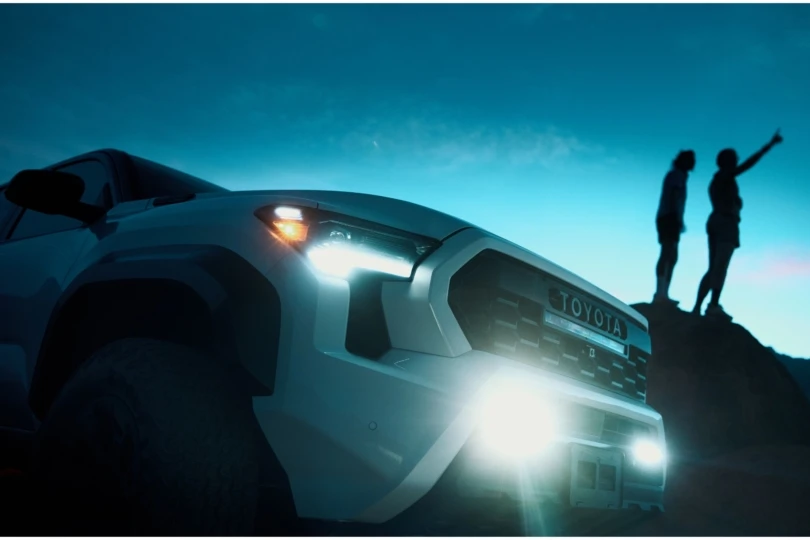A good pair of socks can make or break a day on the trail. Whether I’m out for a casual hike, tackling a big summit, or heading out on a multiday backpacking trip, the right socks keep me comfortable and focused on the adventure. After testing dozens of options, I’ve found a few that hold up to everything I throw at them.
Over the past five years, I’ve put more than 30 pairs of hiking socks through hundreds of miles. I tested them on everything from quick afternoon loops to long, rugged hikes and multiday treks. I paid close attention to breathability, cushioning, comfort, stretch, and long-term durability.
After all that testing, the Darn Tough Hiker Micro Crew Cushion was my best overall pick. It hits the sweet spot for performance and comfort. For a women’s-specific option, I really like the Darn Tough Bear Town Micro Crew Lightweight, especially for its fun design and lighter feel. And for a budget-friendly option, the REI Co-op Merino Flash Socks are an excellent choice for breathable comfort on the trail.
No matter where you’re headed, these socks will keep your feet comfortable and ready for whatever the trail throws your way.
Editor’s Note: For our August 18, 2025, update to this guide, I retested and updated reviews of every sock you see below. I also added several new options, including the Smartwool Classic Hike, the Icebreaker Merino Hike+ Light Crew, and our top pick for winter, the Smartwool Mountaineer Classic.
The Best Hiking Socks of 2025
Best Overall Hiking Socks for Women
Darn Tough Women’s Bear Town Micro Crew Lightweight Hiking Socks
9.3/10 RatingDarn Tough Micro Crew Hiking Socks
- Material: 61% merino wool/36% nylon/3% Lycra spandex
- Height: Crew
- Cushion: Medium
- Moisture wicking: Yes
Pros
- Durable
- Fit well, no bunching or pressure points
- Very versatile
- Lifetime guarantee
- Tried and true
Cons
- Don't feel as plush as some others
Darn Tough Women’s Bear Town Micro Crew Lightweight Hiking Socks
- Material: 54% nylon/43% merino wool/3% Lycra spandex
- Height: Crew
- Cushion: Light
- Moisture wicking: Yes
Pros
- So comfortable
- Stay put during big efforts
- Stellar cushioning
- Durable
- Extremely cute and fun
Cons
- Run slightly small
REI Co-op Merino Lightweight Flash Socks
- Material: 45% merino wool/44% nylon/8% polyester/3% spandex
- Height: Crew
- Cushion: Light
- Moisture wicking: Yes
Pros
- Excellent breathability
- Comfortable
- Durable
- Exceptional moisture wicking
- Soft on the skin
- Durable
Cons
- Extra fabric in heel may bunch up
Smartwool Hike Light Crew Socks
- Material: 69% merino wool/22% recycled nylon/8% nylon/1% elastane
- Height: Crew
- Cushion: Light
- Moisture wicking: Yes
Pros
- Exceptional warmth-to-breathability ratio
- Comfortable
- Durable
- Updated to be more environmentally friendly
Cons
- Can run warm
CEP Run Compression Mid Cut 4.0
- Material: 86% polyamide, 14% spandex
- Height: Crew
- Cushion: Targeted compression
- Moisture wicking: Yes
Pros
- Exceptional moisture wicking
- Lightweight
- Compression optimizes blood flow
- Stylish
Cons
- Prone to snagging
- Not ideal if you’ll be taking them on and off throughout the day
Smartwool Mountaineer Classic Edition Crew Socks
- Material: 74% merino wool, 25% nylon, 1% Elastane
- Height: Crew
- Cushion: Maximum
- Moisture wicking: Yes
Pros
- Exceptionally warm for winter and cold weather
- Thick, soft cushioning for comfort under heavy loads
- Merino wool wicks moisture and resists odor
- Very durable and holds up well after repeated use
Cons
- Too bulky for warm weather or snug-fitting boots
- Not suitable for fast hikes or high-output activities
More Hiking Socks to Keep Your Feet Happy
- Material: 96% nylon/4% spandex
- Height: Mini crew
- Cushion: Light
- Moisture wicking: Yes
Pros
- Snug, supportive fit with left-right design
- Light cushioning with a soft, seamless feel
- Versatile for running, hiking, and casual wear
- Durable with minimal wear after frequent use
Cons
- Feels damp in waterproof or less breathable shoes
- Not enough cushion for longer or rougher hikes
- Material: 61% merino wool, 37% nylon, 2% Lycra
- Height: Crew
- Cushion: Light
- Moisture wicking: Yes
Pros
- Comfortable light cushion
- Temperature-regulating merino wool
- Great fit with no slipping or bunching
- Durable construction
Cons
- Price is on the higher side
- Can feel a bit warm on hot summer days
- Material: 61% merino wool/37% nylon/2% spandex
- Height: Quarter/ankle
- Cushion: Medium
- Moisture wicking: Yes
Pros
- Light cushioning with a snug, secure fit
- Great breathability for warm weather
- No slipping or rubbing
- Durable with a lifetime guarantee
Cons
- Less cushioning than the Micro Crew Hiking Socks
- Lower cut offers less protection from brush and debris
- Material: 77% COOLMAX EcoMade polyester/22% nylon/1% spandex
- Height: Crew
- Cushion: Ultralight
- Moisture wicking: Yes
Pros
- Breathable and quick drying
- Comfortable seamless design
- Good durability for an ultralight sock
- Eco-friendly materials
Cons
- Slightly thicker feel in reinforced areas
- Material: 70% Merino Wool, 29% Nylon, 1% Elastane
- Height: Crew
- Cushion: Extra
- Moisture wicking: Yes
Pros
- Soft, heavy cushioning reduces foot fatigue
- Warm and ideal for cooler weather
- Wicks moisture and resists odor
- Long-lasting comfort after repeated use
- Great for backpacking or heavy pack hikes
Cons
- Too bulky for warm weather or tight shoes
- Not suited for fast-paced or high-output hikes
- Material: 63% merino wool/ 37% nylon
- Height: Mid-calf
- Cushion: Medium
- Moisture Wicking: Yes
Pros
- Secure fit that doesn’t slide or bunch
- Lightweight feel with just enough cushion
- Breathes well and dries quickly
- Durable even with frequent use
- Versatile in both warm and cool conditions
Cons
- Not as soft or cushy as thicker socks
- Tight fit may not suit those who like a relaxed feel
- Material: Inner layer: 65% Dri-WRIGHT ll polyester/26% nylon/5% silver/4% Lycra spandex; Outer layer: 68% Dri-WRIGHT ll polyester/24% nylon/8% Lycra spandex
- Height: Crew
- Cushion: Light
- Moisture wicking: Yes
Pros
- Excellent odor resistance over multiple days
- Comfortable cushioned feel
- Breathable for a thicker sock
- Double-layer design helps prevent blisters
- Durable construction holds up to long hikes
Cons
- Feels bulky compared to lightweight hiking socks
- May run warm on hot summer days
- Higher price than basic hiking socks
- Material: Inner layer: 75% COOLMAX EcoMade polyester / 21% nylon / 4% Lycra spandex
- Height: Crew
- Cushion: None
- Moisture wicking: Yes
Pros
- Prevents blisters between toes
- Soft and breathable
- Dries quickly
Cons
- Prone to wear around the toes
- Takes longer to put on
Best Hiking Socks Comparison Table
| Hiking Socks | Price | Material | Height | Cushion |
|---|---|---|---|---|
| Darn Tough Micro Crew Hiking Socks | $25 | 61% merino wool/36% nylon/3% Lycra spandex | Crew | Medium |
| Darn Tough Women’s Bear Town Micro Crew Lightweight Hiking Socks | $25 | 54% nylon/43% merino wool/3% Lycra spandex | Crew | Light |
| REI Co-op Merino Lightweight Flash Socks | $20 | 45% merino wool/44% nylon/8% polyester/3% spandex | Crew | Light |
| Smartwool Hike Light Crew Socks | $25 | 69% merino wool/22% recycled nylon/8% nylon/1% elastane | Crew | Light |
| Balega Hidden Comfort Socks | $16 | Polyester | No-show | Medium |
| CEP Run Compression Mid Cut 4.0 | $16 | 86% polyamide, 14% spandex | Crew | Targeted compression |
| Smartwool Mountaineer Classic Edition Crew Socks | $27 | 74% Merino Wool 25% Nylon 1% Elastane | Crew | Maximum |
| Feetures Elite Light Cushion Mini Crew Socks | $20 | 96% nylon/4% spandex | Mini Crew | Light |
| Icebreaker Merino Hike+ Light Crew Socks | $25 | 61% merino wool, 37% nylon, 2% Lycra | Crew | Light |
| Darn Tough Hiker Quarter Cushion Socks | $21 | 61% merino wool/37% nylon/2% spandex | Quarter/ankle | Medium |
| REI Co-op Merino Wool Lightweight Hiking Crew Socks | $18 | 77% COOLMAX EcoMade polyester/22% nylon/1% spandex: | Crew | Ultralight |
| Smartwool Classic Hike Extra Cushion Crew | $25 | 70% Merino Wool, 29% Nylon, 1% Elastane | Crew | Extra |
| Swiftwick Pursuit | $22 | 63% merino wool/ 37% nylon | Mid-calf | Medium |
| WRIGHTSOCK Double Layer Silver Escape Crew Socks | $25 | Inner layer: 65% Dri-WRIGHT ll polyester/26% nylon/5% silver/4% Lycra spandex; Outer layer: 68% Dri-WRIGHT ll polyester/24% nylon/8% Lycra spandex | Crew | None |
| Injinji Liner Crew Socks | $12 | Inner layer: 75% COOLMAX EcoMade polyester / 21% nylon / 4% Lycra spandex | Crew | None |
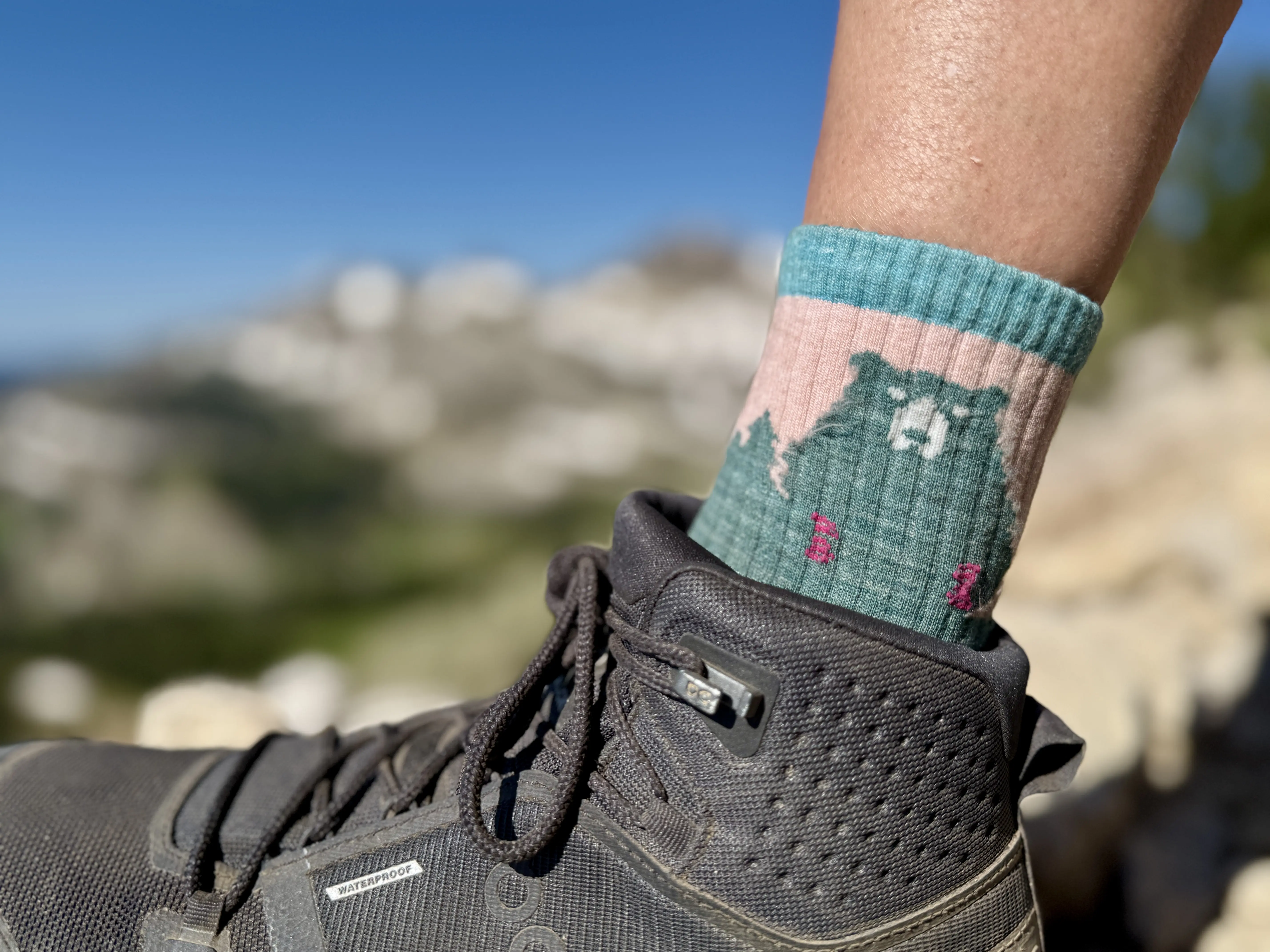
How I Tested Hiking Socks
Why Believe Me?
As an avid hiker and mountaineer who has trekked for months on end through Nepal, Africa and Thailand, climbed the tallest peaks in Alaska, Canada, and the Pacific Northwest, and gone on month-long explorations on foot in countries like Costa Rica, Bali, Iceland, and more, I know what it’s like to spend more time on your feet than off them. So, I know how important it is to have the best hiking socks for each situation.
When I took over this guide in 2025, I wanted to go beyond basic comfort tests and see how these socks actually performed in the wild. I tested every pair across a range of terrain and conditions, from climbing rocky peaks in Colorado to hiking endless switchbacks in the Tetons and bushwhacking through thick brush in Alaska. I focused on real-world use, paying close attention to fit, comfort, breathability, durability, and how each pair handled long days on the trail.
My Testing Approach
I tested socks of all cuts, materials, and thicknesses across every season, mixing in everything from short day hikes to multiday backpacking trips and snowy winter outings. I paired them with different footwear, including trail runners, low hikers, and tall boots, to see how they performed in a variety of setups. Whether I was moving fast or carrying a heavy pack, I looked for socks that stayed comfortable, managed moisture, prevented blisters, and held up after repeated use and washing.
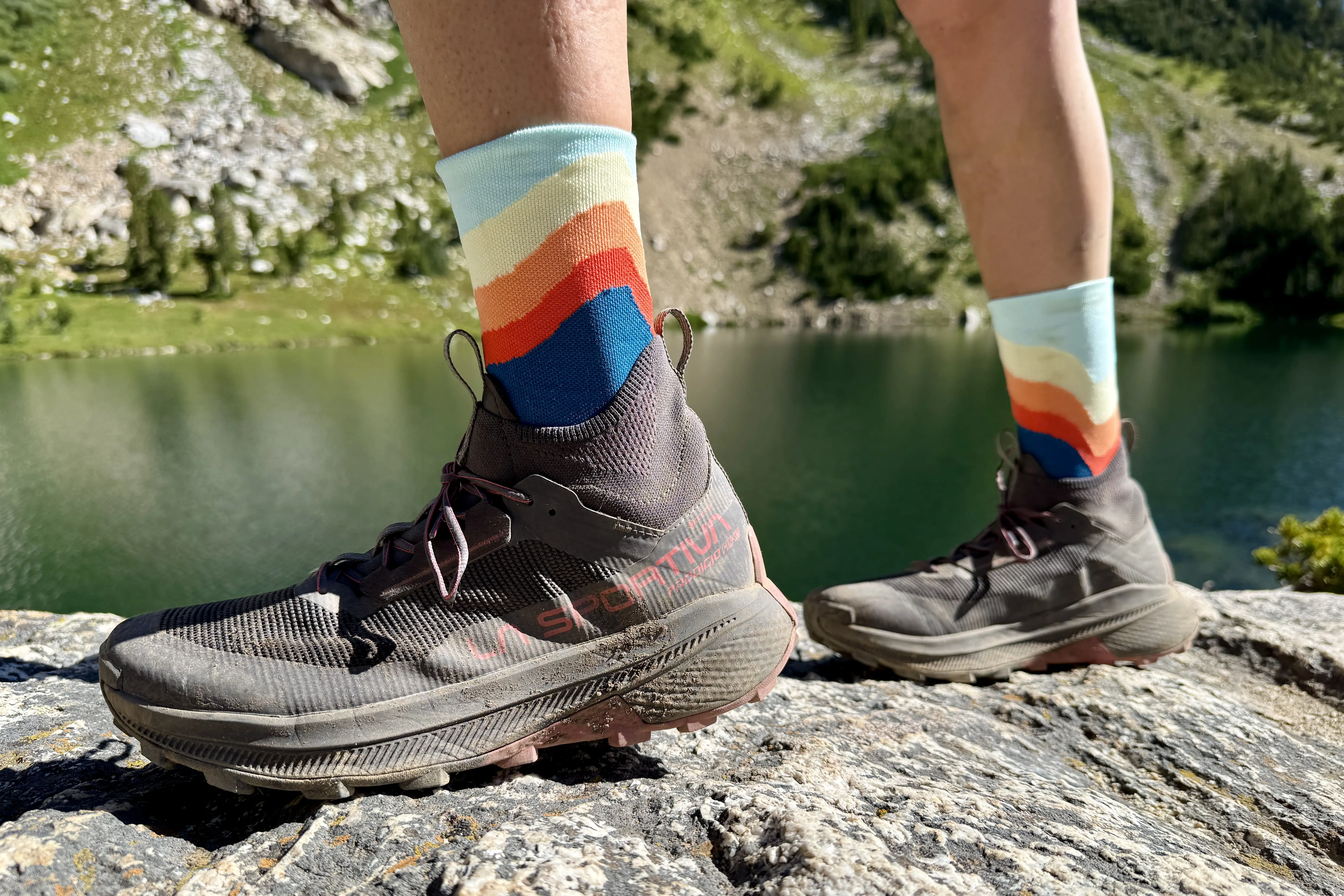



Buyer’s Guide: How to Choose the Best Hiking Socks
The first step in the process is choosing the correct hiking socks for your preferred activities and your budget. Do you do a lot of backpacking and want socks with more support and cushion? Or do you mainly enjoy fast and light endeavors? Do your feet run hot or cold?
Decide how often you’ll be hiking and what features are most important to you. If you hike a lot, the more durable, the better. If your feet run hot, stay away from wool.
The two main variables to consider are your physical constitution and the types of activities you’ll be engaged in.
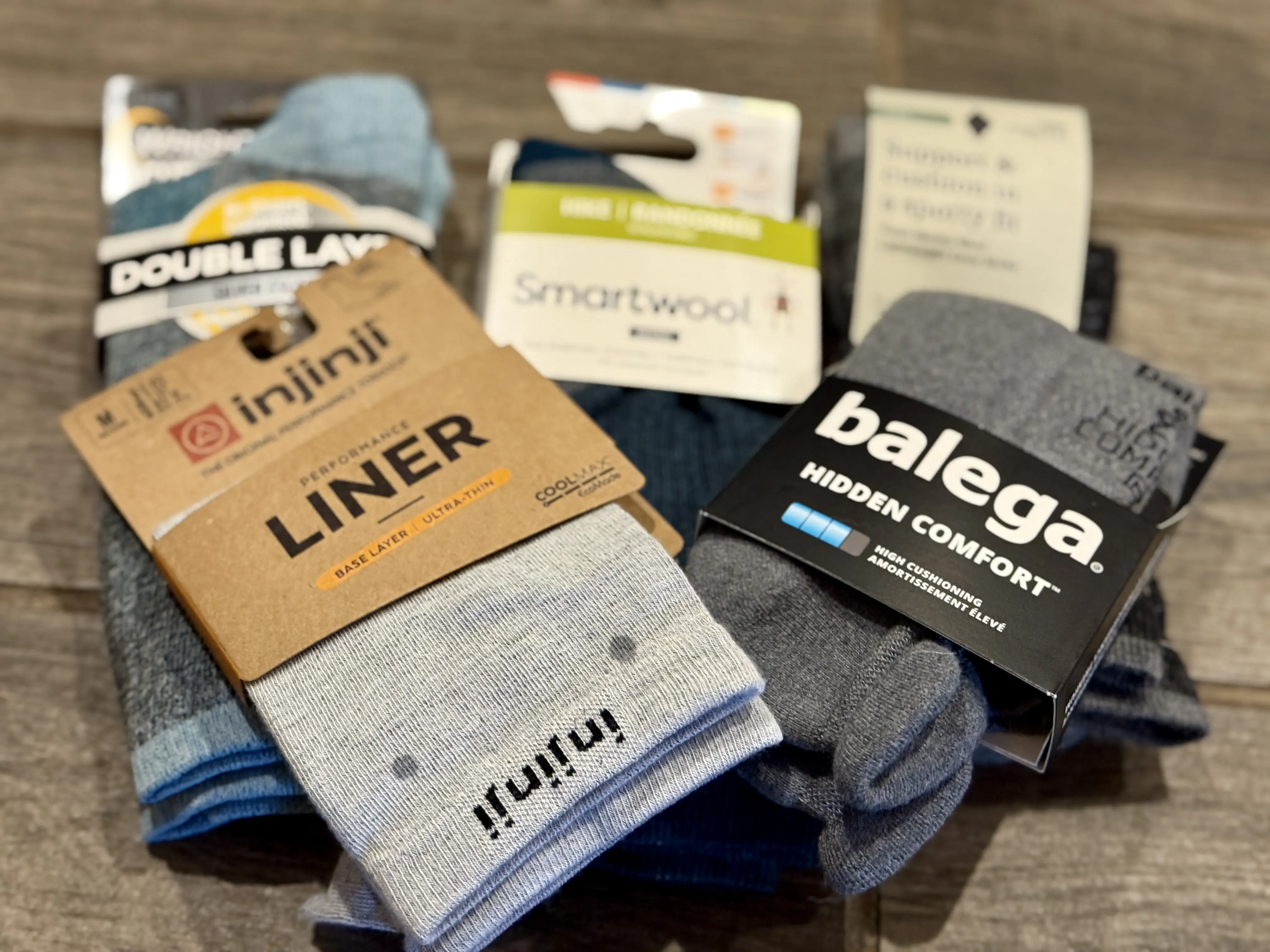



Materials
If your feet run cold, wool socks (like the Smartwool Performance Hike Light Cushion) are a great choice. Wool is generally considered the warmest yet most breathable option for outdoor gear.
If your feet run hot or you’ll be hiking in high temperatures, consider something with a mix of materials and excellent moisture-wicking properties. The REI Co-op Merino Lightweight Flash Socks are a great example, made with a combination of wool, polyester, nylon, and spandex.




Activity
Obviously, we’re focused on hiking, but that could mean a 2-hour excursion or a 2-month trek. Some people take their time, and others hustle. Luckily, certain socks work better for each type of jaunt, and some work well enough for all.
If you’re thru-hiking, you’ll want to look for durability, long-term comfort, and exceptional technical function. In that regard, there aren’t many better options than the Darn Tough lineup, including the Darn Tough Hiker Micro Crew Cushion. The Smartwool Hike Light Crew is another durable option.
They last long enough for the company to offer a warranty, and their performance is up to par. They’ve long been considered one of our top picks.
If you’re into fast-paced endeavors, a lighter, streamlined, running-inspired sock will probably better suit your needs. On this list, the Swiftwick Pursuit Seven and Balega Hidden Comfort are perfect examples. Both have a compression feel, wick moisture extremely well, and dry out quickly..
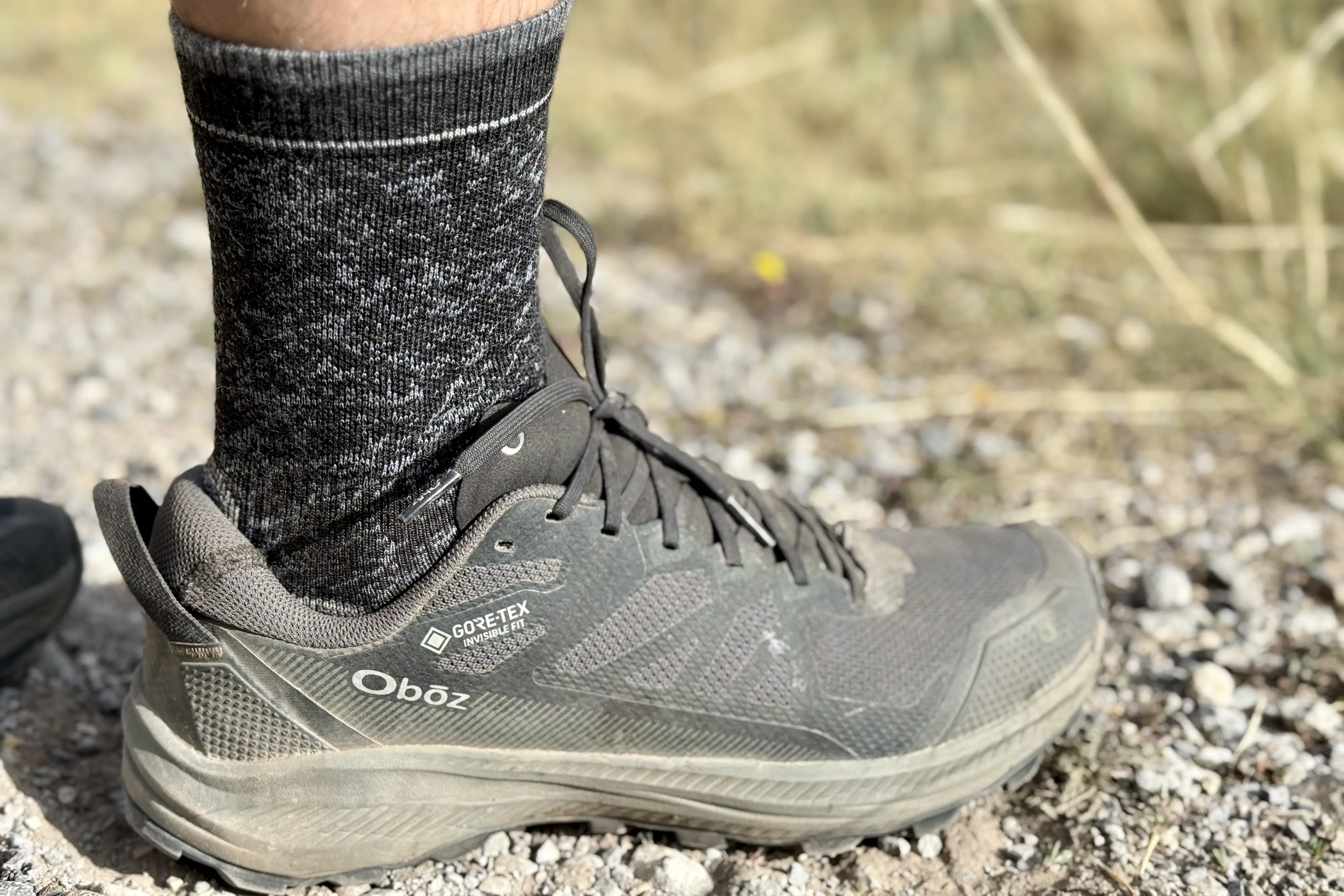



Moisture Wicking and Breathability
Moisture wicking and breathability are essential for just about all types of hiking, especially fast-paced endeavors. Moisture-wicking pulls moisture away from the feet and promotes evaporation, while breathability helps expel trapped heat. As you can imagine, these factors go hand in hand.
Merino wool is a wonder fabric when it comes to the combination of warmth and breathability, whereas synthetic fibers tend to wick moisture better. The REI Co-op Merino Lightweight Flash offers an optimal blend of nearly half merino and half synthetic fibers, so it’s a great choice if you’re looking for a compromise.
If your feet sweat profusely and you’re keen on high-output activities, we recommend the CEP The Run Compression socks. Their moisture-wicking properties are exceptional, and your feet will thank you after a long day.
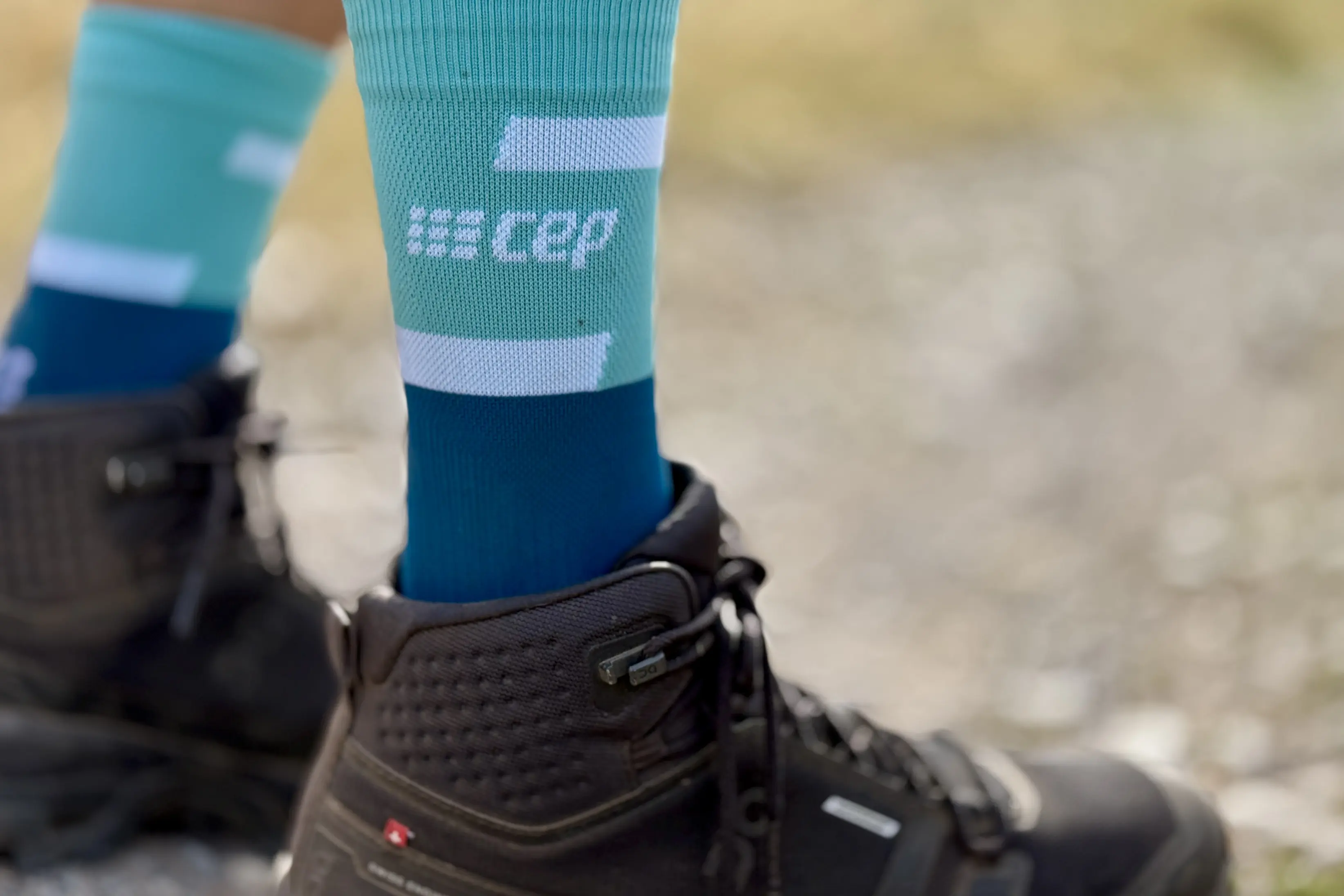



Compression Socks
As mentioned above, compression socks improve blood flow, can aid in injury prevention, and are useful as a rehabilitative tool post-hike. If you’re an outdoor athlete and haven’t given them a try, we’d recommend giving them a shot both on and off the trail.
Because they have a very tight fit and can leave weathered footwear feeling loose, they aren’t optimal for casual hikes (unless you’re trying to keep plantar fasciitis at bay). If you’re wearing performance footwear, expect to sweat, and are planning on your feet and ankles taking a beating, they’re ideal.
That said, we all have unique feet and needs. CEP’s compression lineup comes in a variety of stylish colors, so you may find yourself wearing them as your everyday socks to aid in recovery.
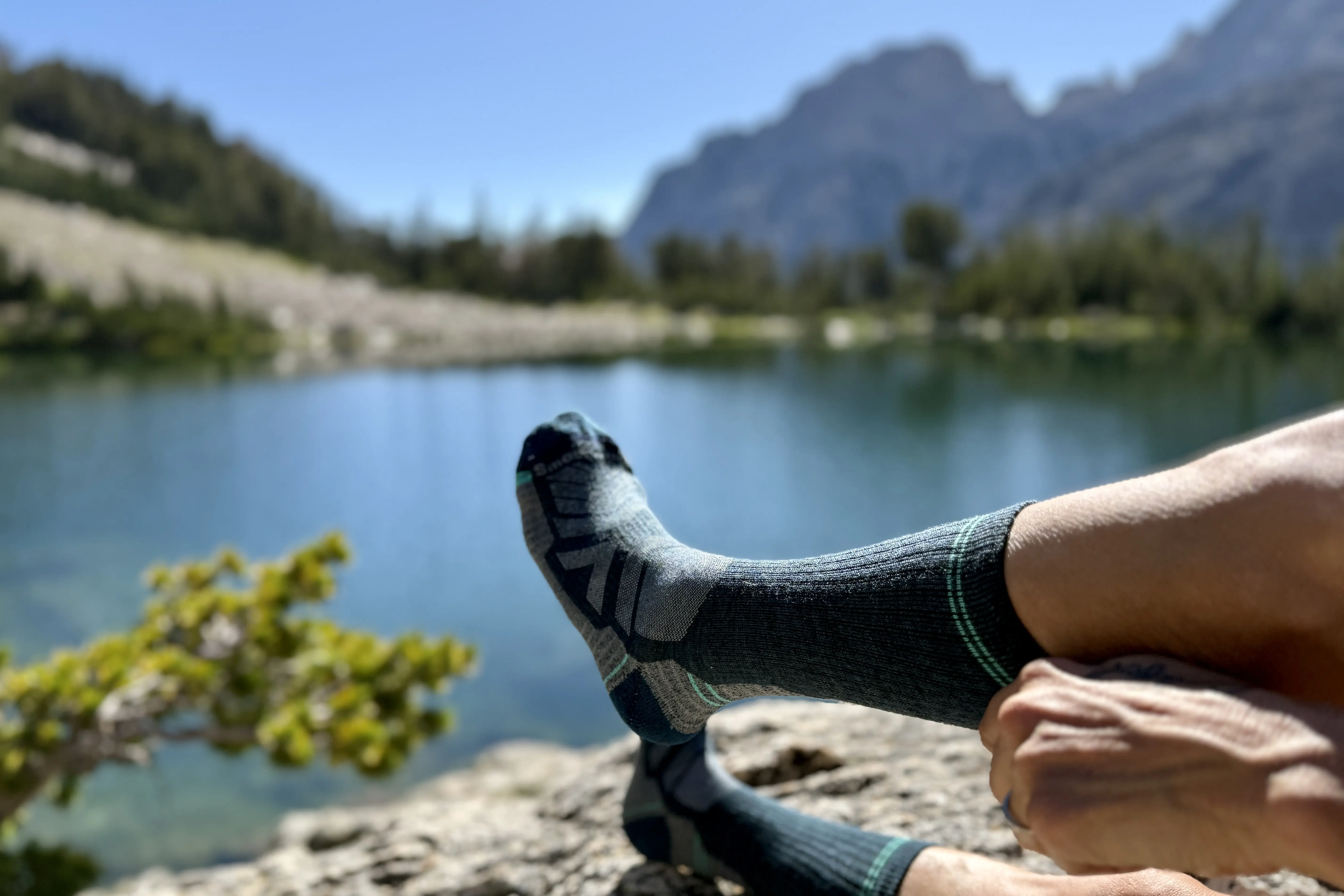



Cushioning
Cushioning is a tricky subject because more cushioning doesn’t necessarily translate to more comfort. Our shoes provide the primary source of padding from the ground, but socks with no cushioning at all can leave us with hot spots and blisters.
The heel and ball of the foot are the primary areas where at least some cushioning is needed, and every sock on this list addresses those to some degree. Thicker socks with higher wool content tend to provide more cushioning underfoot, whereas tighter, performance-oriented socks tend to have less. The Smartwool Hike Light Crew are thin and comfortable, but cushioned in all the right places.
While running or moving quickly, we’re more prone to using the muscles in our feet to brace ourselves, which means we actually require less cushioning. Cushioning is more important for long-distance hiking, where the impact is less but remains consistent throughout the day.
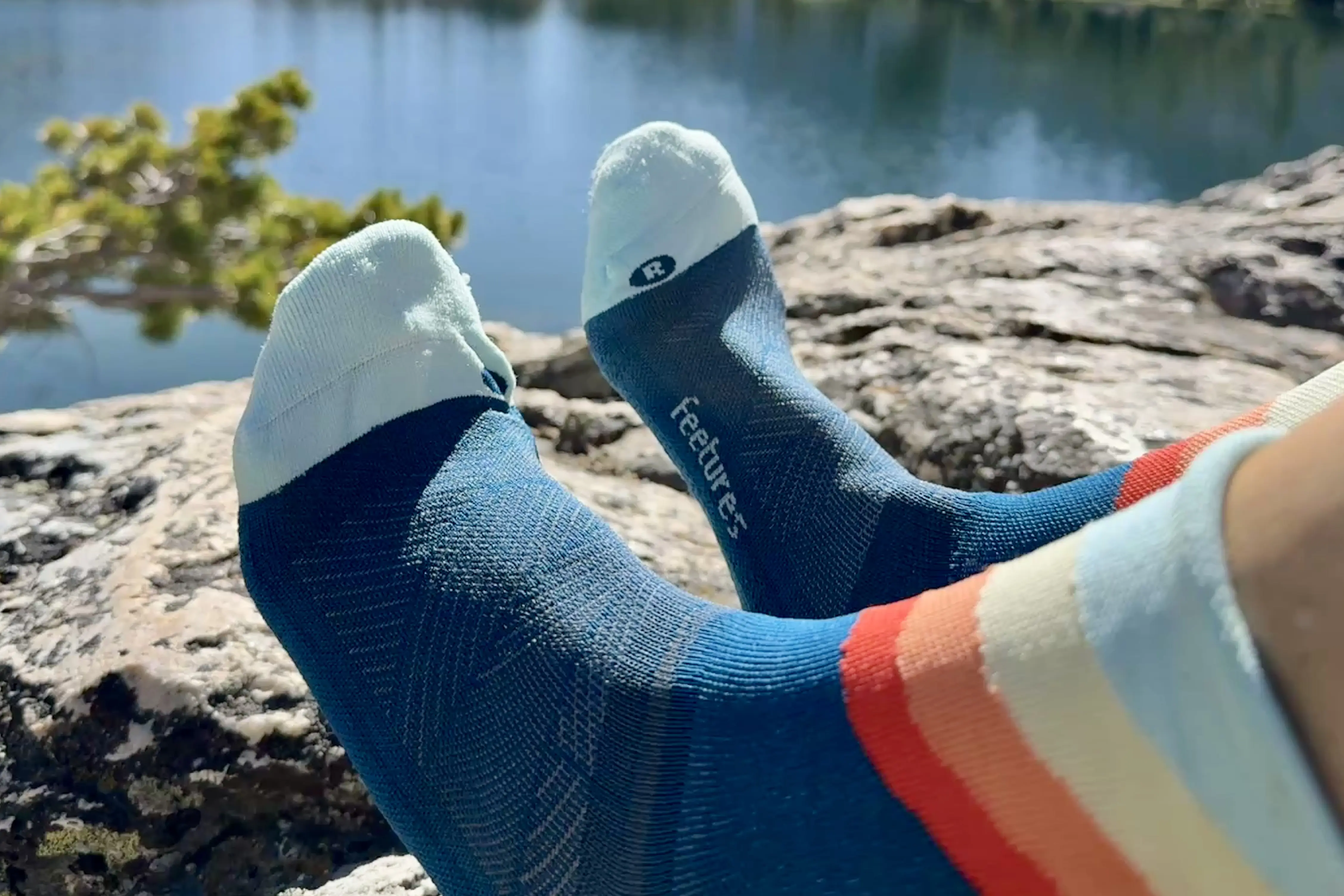



Price & Value
Budget
They cost more than those cotton 12-packs that you’ll find at Costco, but fortunately, hiking socks don’t generally cost a ton of money. A good budget pair of socks will run you anywhere from $10 to $15. In this price range, you can expect technical fabrics like polyester, which dries quickly and wicks away moisture.
The least expensive sock on this list, the Injinji Liner Crew Socks ($12), are an excellent (if somewhat fragile) lightweight sock that dries quickly and is exceptional at minimizing blisters.
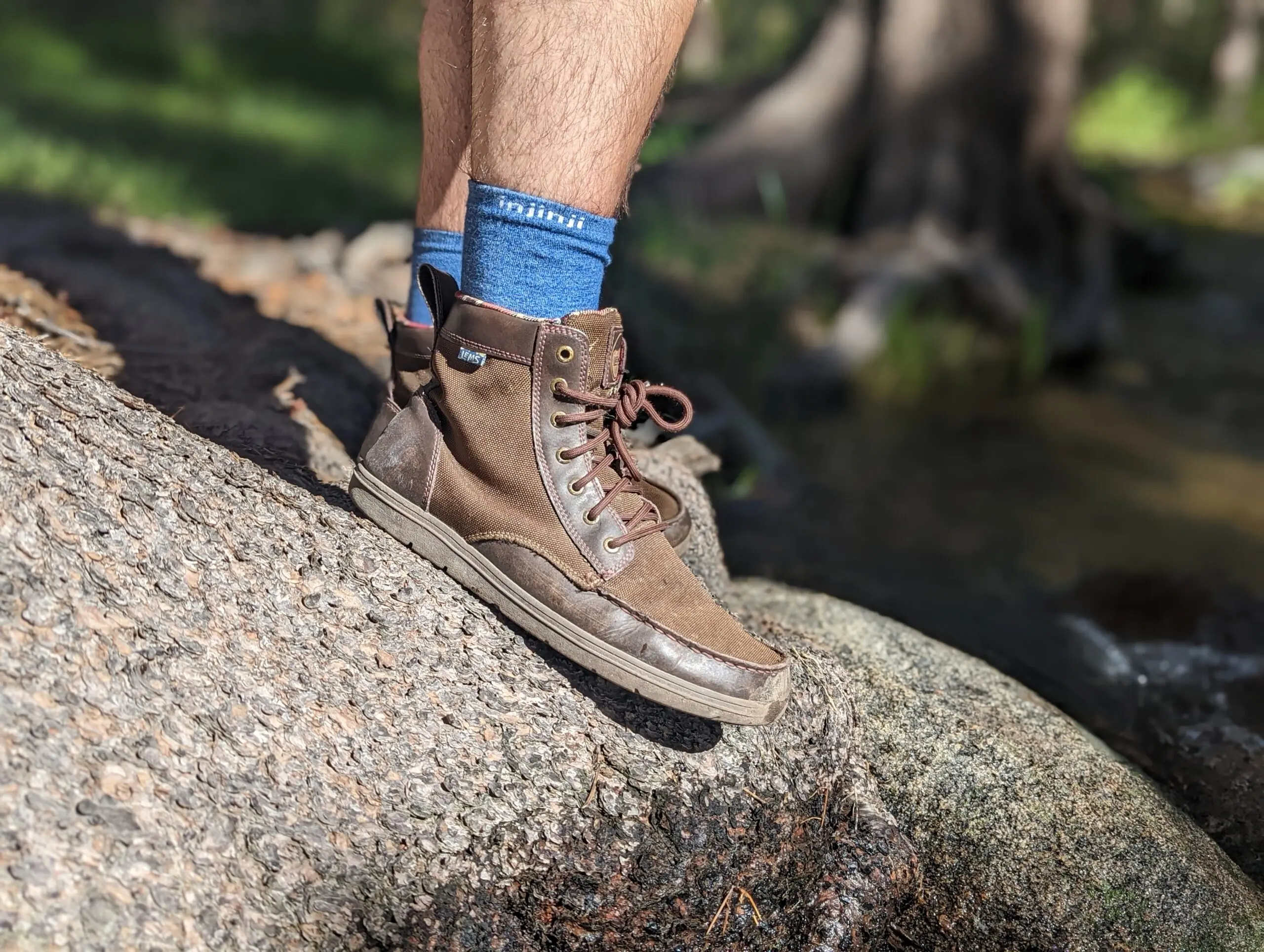



Mid-Tier
In the $15-25 price range, you can find more natural materials like merino wool on wool/synthetic blends, as well as thicker socks for more insulation and durability. The Darn Tough Hiker Micro Crew Cushion ($26) is our top pick, thanks to the stink-proof merino and nylon blend. They’re also ridiculously durable — we’ve worn holes in them, but only after 500+ miles during thru-hikes.
Our top overall pick for women, the Darn Tough Bear Town Micro Crew Lightweight ($25), is extremely durable, comfy, and cute. These socks perform well and make a fashion statement.




Premium
If you’re looking for a sport-specific sock or one made with a more unique material, you could spend over $25. The priciest sock on our list, the Smartwool Mountaineer Classic Edition Crew Socks, will cost you $27, but they offer unmatched warmth and cushioning in our pick for best winter hiking socks.
Frequently Asked Questions
The best hiking socks that won out for us in testing were the Darn Tough Hiker Quarter Cushion and Smartwool Performance Hike Light Socks.
For a cheaper option, consider our best budget pick, the Feetures Elite Light Cushion Mini Crew Socks.
This is partly based on intended activity and use, and partly based on preference. Thicker socks with medium to heavier cushioning might feel more comfortable in a traditional hiking boot, while a light-cushioned sock might feel better in a lightweight or low-hiker. If you plan on doing a lot of hiking in the fall and winter or on longer trails, consider thicker socks (both for support and warmth).
This is really a preference, and materials vary widely by brand and sock style. However, we’ll say we had the best performance and durability from socks with a merino, nylon, and elastane (or spandex) blend, where the merino is the higher material content (50-60%).
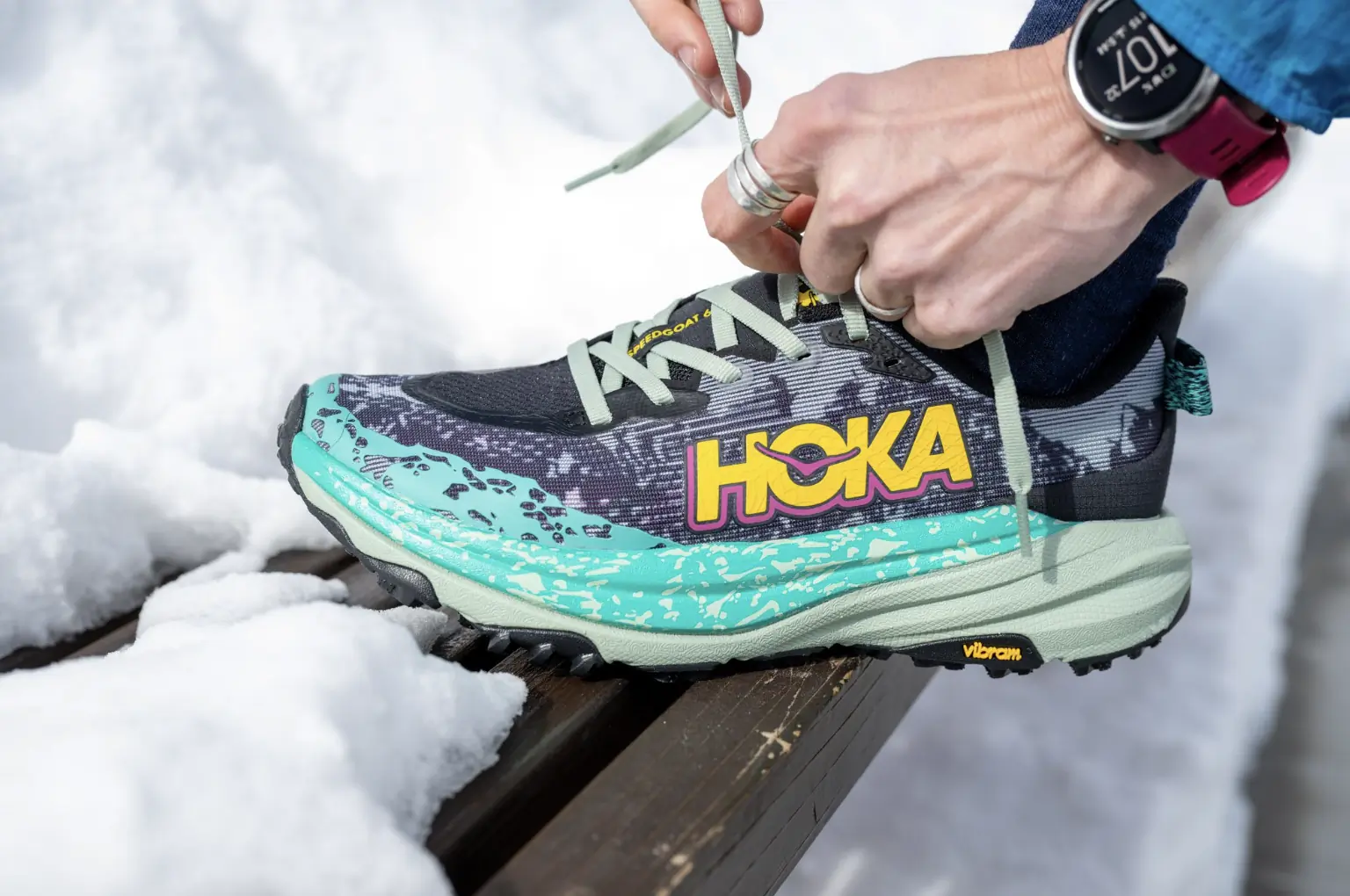

The Best Hiking Shoes of 2025
We tested and ranked the best hiking shoes for men and women for 2025, including top picks from Hoka, Salomon, Merrell, SCARPA, and more.
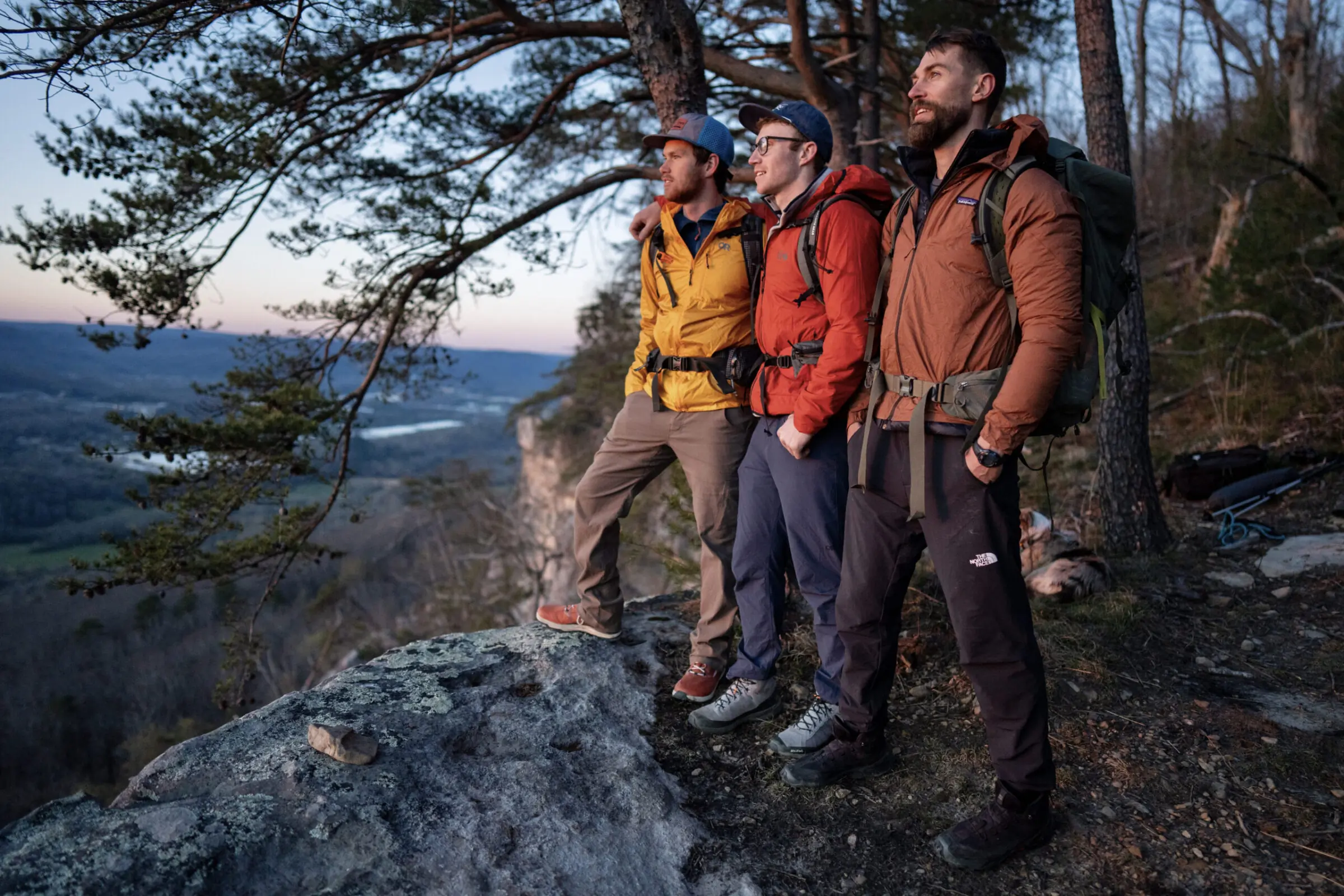

The Best Hiking Pants for Men of 2025
We tested the best men’s hiking pants from Outdoor Research, REI Co-op, Fjällräven, Black Diamond, and more to help you find the best option for your needs and budget.
